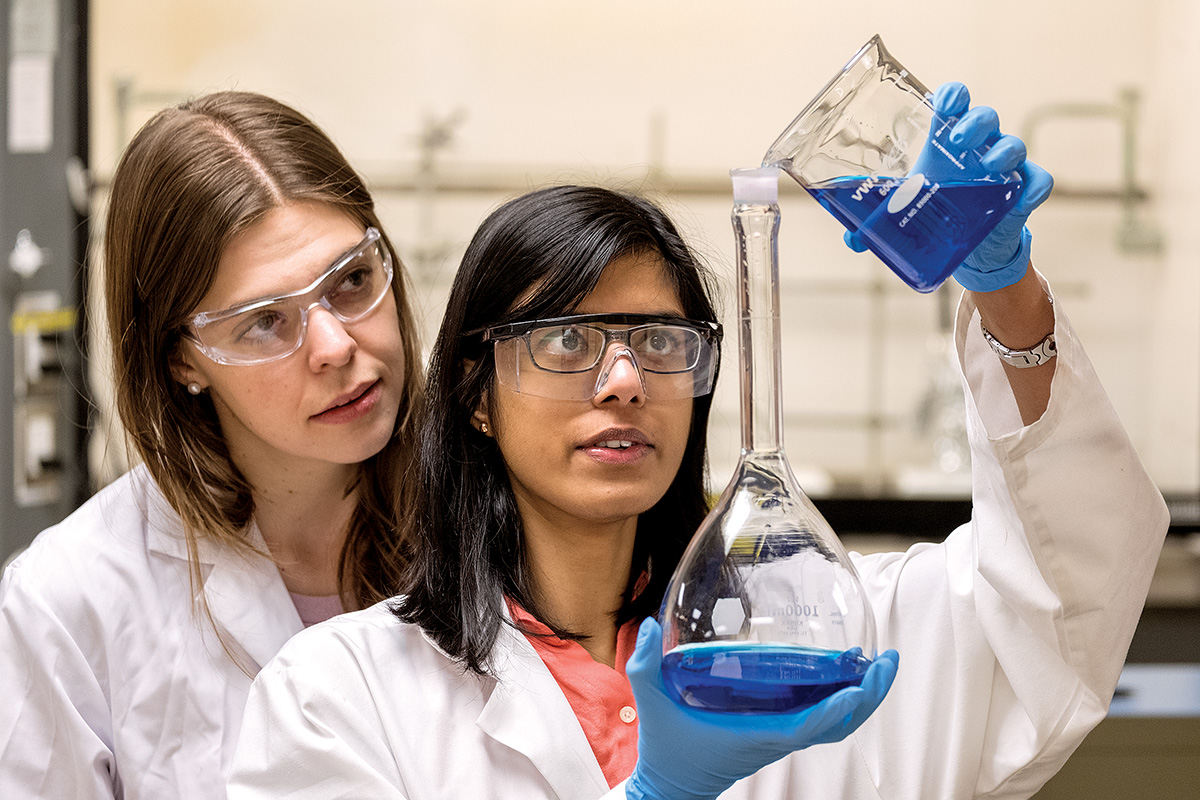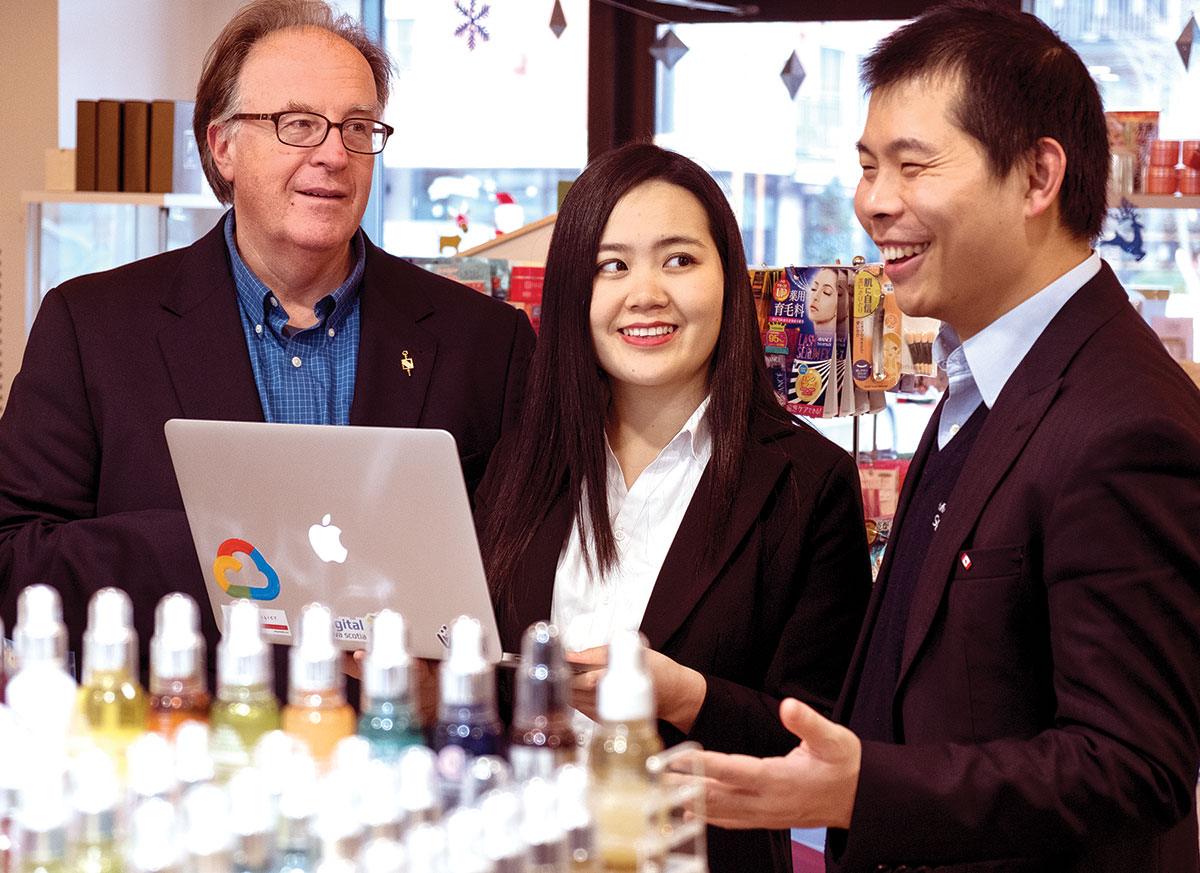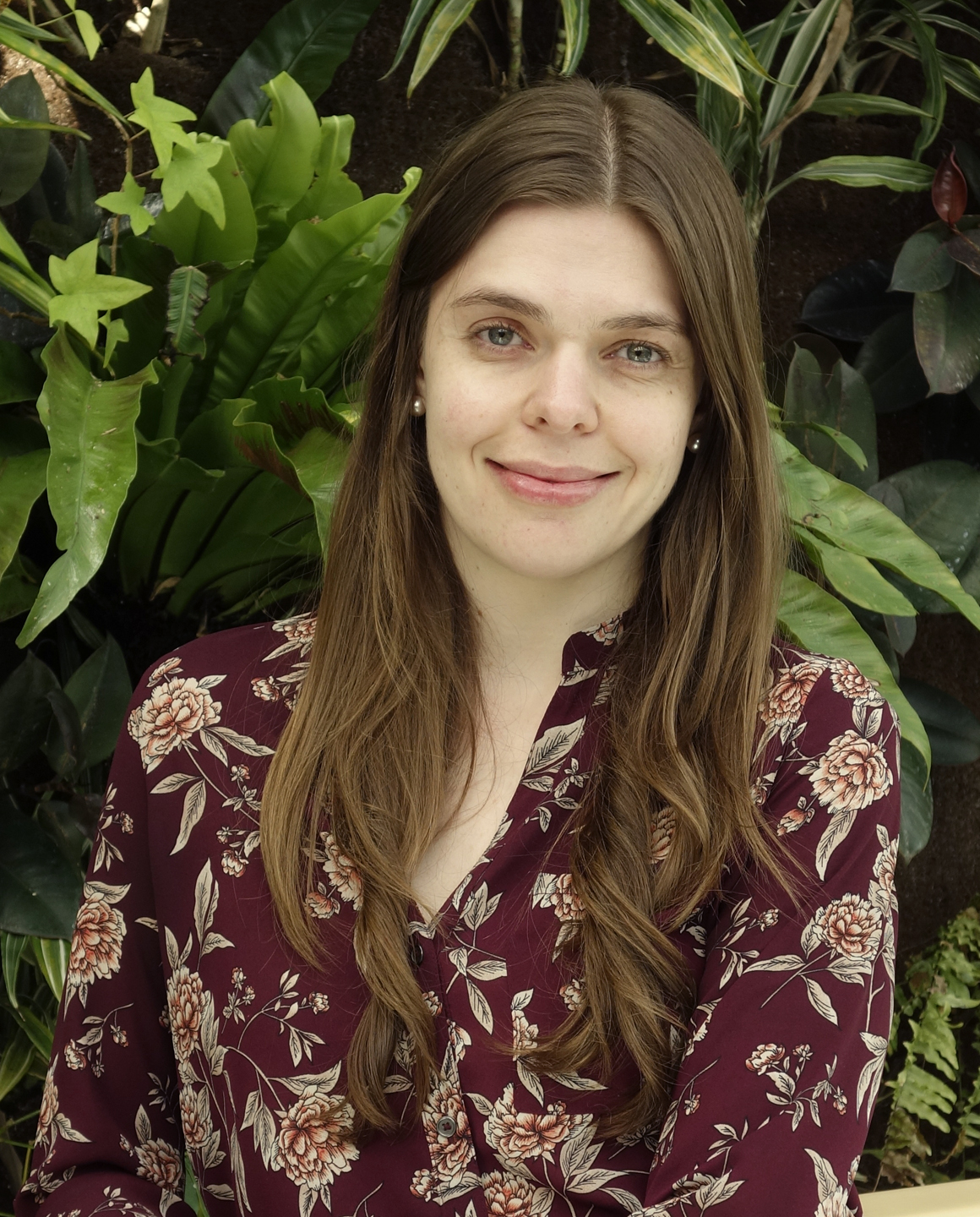Unlocking overlooked history from a 2,200-year-old Roman villa
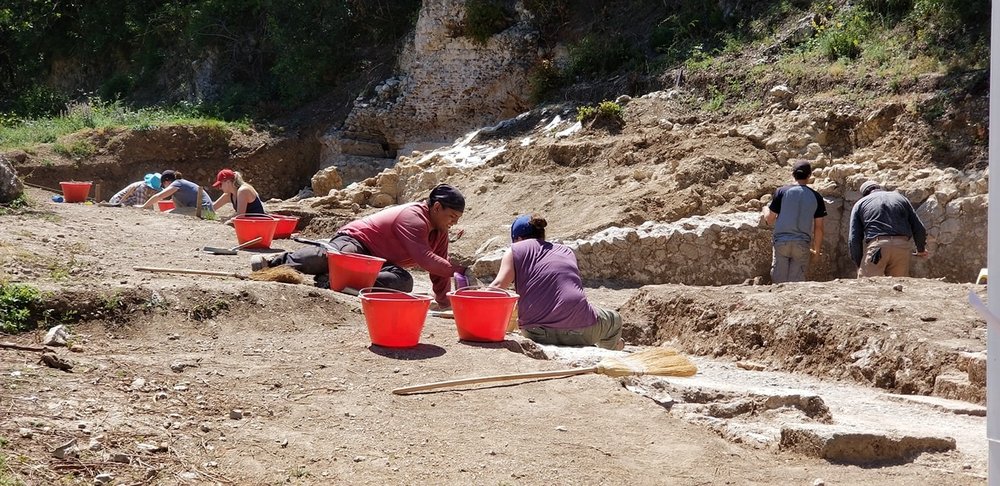
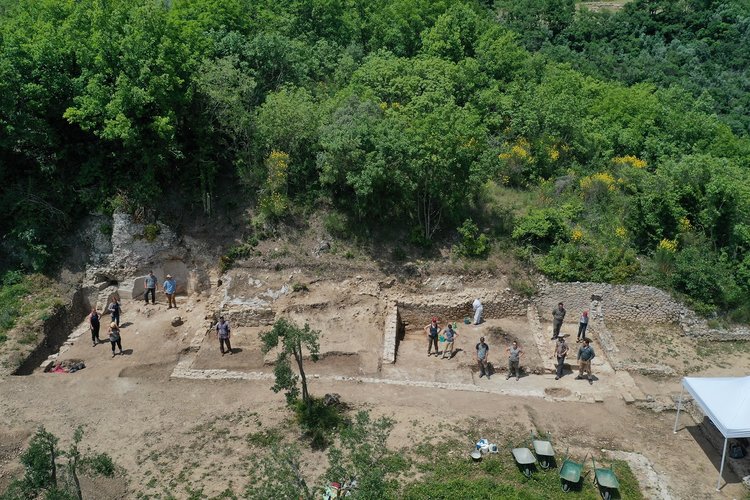
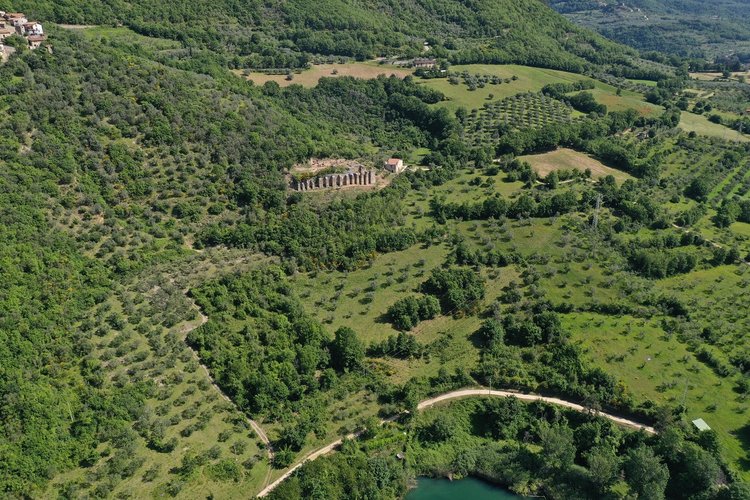
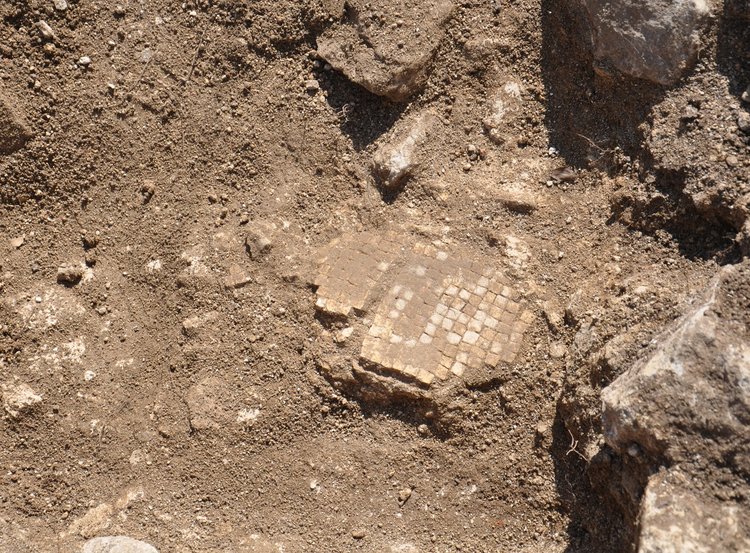
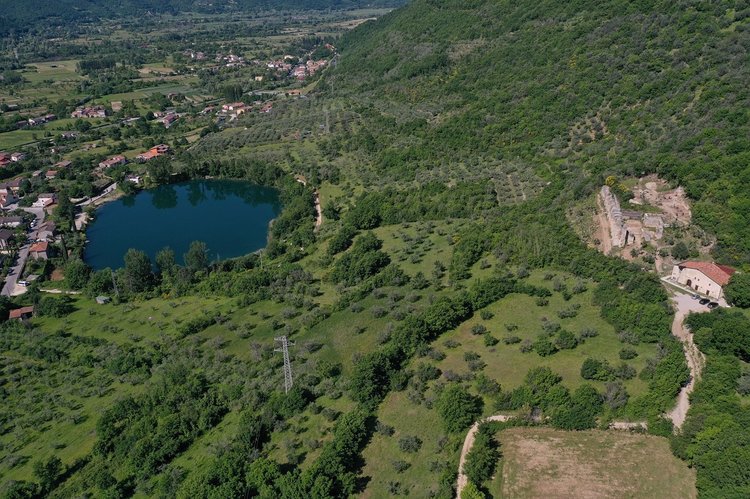
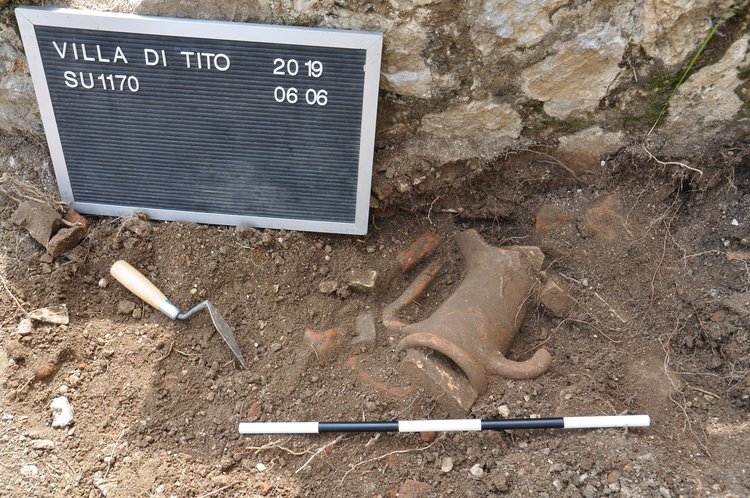
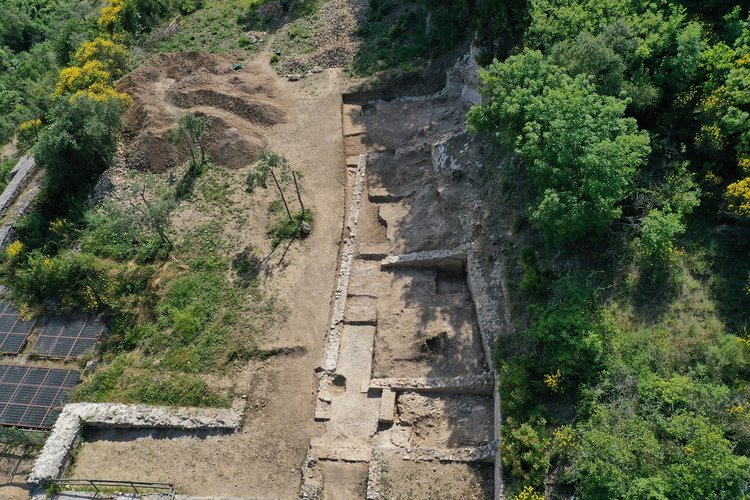
When modern technology meets buried remnants from the early Roman Empire, collaborative research has the potential to unearth new chapters of human history never previously analyzed.
That’s the thinking behind The Villa di Tito Project: Reexamining Roman Villas, helmed by Dr. Myles McCallum of Saint Mary’s University. The project received nearly two thirds of SMU’s most recent round of federal research funding, announced July 17 by the Social Sciences and Humanities Research Council (SSHRC).
Home to an annual archaeology field school for Saint Mary’s and McMaster University students, the rural Villa site is located amid olive groves on the north slopes of the Velino river valley in central Italy, in the province of Reiti. It’s along the Via Salaria, an ancient road used to transport salt into the interior of Italy, which ran from Rome to the Adriatic. The Villa sits high above a freshwater lake that is also ripe for archaeological study – the Lago di Paterno, once considered the geographical centre of Italy and a sacred site connected to the goddess Vacuna.
Over its five-year lifespan, the SSHRC Insight grant will – among other things – reduce costs for students participating in the field school, and allow McCallum to hire and train several undergrads each year to work as research assistants on the project. Including three this summer, plus a fourth hired with funds from SMU’s Faculty of Graduate Studies and Research.
“The research results were pretty spectacular this summer and will just get better over the next few years,” says McCallum, Chair of the Department of Modern Languages and Classics. The students “did an amazing job, they worked incredibly hard, and learned a bunch of new things like using our database system, flying a drone, doing some detailed photography and photogrammetry, and more.”
The field school also teaches the fundamentals of archaeological excavation, field surveying, drawing, and artifacts analysis. The drone footage will help to create detailed views, maps and 3D models of the area.
“This particular structure is monumental in size. Whoever built it in the 1st century B.C. invested a lot of time and money into it. It was a showpiece in the countryside for them, and probably the local centre of the social and economic network,” says McCallum.
One of the project’s goals is to find evidence to prove the theory that the Villa was originally built by Titus (Tito), a member of the Flavian family and the Second Dynasty of the Roman Empire. More importantly, it aims to reconstruct the lives of the workers – the people who made bricks and wine, grew crops, pressed olives for oil, or engaged in mining, woodworking and metalworking.
“The historical record is highly biased toward the social elites and the aristocracy,” says McCallum. “They wrote the history for themselves and they didn’t tend to write about slaves or poor people. We want to understand the Villa as a community, as opposed to just a monument to one person or family’s wealth and prestige.”
A good portion of the two-storey structure was revealed over the summer. Other notable finds were coins, stamped tiles, ceramic pots and transport amphorae, chunks of mosaic flooring, and incredibly intact brick walls. The Villa went through a series of renovations over the centuries, and was briefly repurposed after apparently being abandoned for a few hundred years. Environmental archaeology will yield more clues about the people: collecting and analyzing soil samples for pollen, seeds, charcoal, food remains and animal bones can indicate whether diets changed over time, pre-Roman conquest to post-conquest.
“We’re beginning to understand this transition, and the role played by these villas and estates in the process of creating a homogeneous imperial culture in Italy,” says McCallum.
The SSHRC Insight grants are designed to promote research collaboration and partnerships. The Villa di Tito project team includes researchers from McMaster, Oxford, the University of Rome, the University of Nevada and Texas A&M. McCallum has invited Saint Mary’s colleagues in Geography and Chemistry to get involved, for everything from carbon 14 dating and chemical analysis to geomorphology and ground-penetrating radar.
Recruitment is underway for next summer’s field course, and students in all disciplines are welcome. McCallum admits it’s not the most glamourous work: “You’re outside all day for eight to 10 hours. It can get hot, it can rain, and there are bugs.” Even so, most students agree it’s an unforgettable learning experience.
Follow the project on Facebook via the Villa of Titus Archaeological Research Project and the Saint Mary’s Department of Modern Languages and Classics.
Saint Mary’s part of new $6.5 million offshore de-risking project
Adam MacDonald, NS Department of Energy & Mines, examines a core sample taken during an offshore coring cruise. (Source: Genome Atlantic)
Saint Mary’s University is part of a major new initiative that adds genomics technologies to traditional geoscience with the aim to reduce the risk for oil exploration in Nova Scotia’s offshore.
The $6.5 million project, Validation and Integration of Genomics Solutions for Offshore Oil Exploration in Nova Scotia and Beyond, was announced by the Honourable Kirsty Duncan, Minister of Science and Sport, as one of 20 projects across Canada awarded through Genome Canada’s Genomic Applications Partnership Program (GAPP).
The initiative builds on the work of a previous GAPP project in which genomics data and results were compared with petroleum geochemistry data to paint the clearest picture yet of petroleum deposits in areas of Nova Scotia’s offshore. This new project, involving the same team, will take that work to the next level by delivering high-resolution tools and maps developed with the help of autonomous underwater vehicles (AUVs), advanced ‘omics technologies and machine learning.
“The idea of using genomic (DNA-based) tools to help de-risk offshore oil and gas exploration efforts has transitioned from a ‘what if’ idea not that long ago into a compelling opportunity that has earned the support of this project’s many partners,” said Steve Armstrong, President and CEO of Genome Atlantic. “We are extremely pleased to have the opportunity to work with such a dedicated and talented group committed to establishing Nova Scotia as a leader within this globally competitive sector.”
Project co-lead Dr. Todd Ventura
The project is co-led by Dr. Todd Ventura (Saint Mary’s University), Dr. Casey Hubert (University of Calgary), and Adam MacDonald (Nova Scotia Department of Energy and Mines) and is managed by Genome Atlantic in partnership with Genome Alberta.
“This GAPP is expanding on the microbiological toolkit with the addition of lipidomics,” said Dr. Todd Ventura, Saint Mary’s University. “This may allow us the ability to detect more ancient seepage events that can lead to the discovery of new active petroleum systems in the offshore.”
Project partners include the Nova Scotia Department of Energy and Mines; the Geological Survey of Canada, Natural Resources Canada; Research Nova Scotia; Nova Scotia Offshore Energy Research Association (OERA); Mitacs Canada; Applied Petroleum Technology (APT); the University of Calgary; and Saint Mary’s University.
“De-risking our offshore for exploration is critical for Nova Scotia to remain competitive in a global market,” said Adam MacDonald, NS Department of Energy and Mines. “Adding new tools and building innovative and integrated projects such as this collaboration with the University of Calgary and Saint Mary’s University gains recognition and attention to our quality and capacity to compete. Not only do we de-risk exploration but this project provides environmental baseline information on the benthic life and communities that may be dependent on natural occurrences of hydrocarbon on the seafloor.”
The Province of Nova Scotia’s commitment to the project is part of its $12 million investment in offshore R&D over the next four years.
“For generations, the offshore has paid off for Nova Scotians and it still holds tremendous potential to grow our economy and create jobs across the province, especially in rural areas,” said Nova Scotia Energy and Mines Minister Derek Mombourquette. “By continuing to invest in leading-edge research we will find cleaner and safer ways to look for resources and attract international investment to our shores.”
Saint Mary’s PhD student to receive Research Nova Scotia Quest Award
Brendan Grue, a Saint Mary’s University (SMU) PhD in Applied Science student, is the 2019 recipient of Research Nova Scotia’s (RNS) prestigious Quest Award.
“I was surprised and honoured to be chosen,” said Grue. “I think it reflects the growing research community here at Saint Mary’s.”
Brendan Grue, a Saint Mary’s University PhD in Applied Science student and the recipient of the 2019 recipient of Research Nova Scotia’s (RNS) prestigious Quest Award.
Grue is researching the development of a new class of orthopedic implants to hopefully reduce the use of metallic plates and alleviate the need for autograft surgery. An autograft is a procedure where bone or tissue is transferred from one spot to another on a patient’s body. He is working under the supervision of Dr. Samuel Veres, an associate professor for the Division of Engineering at Saint Mary’s University.
“Brendan's wide-ranging and multidisciplinary laboratory talents have been incredibly important to our lab,” said Dr. Veres. “Thanks to him we are now in a position to substantially expand our work in scaffold development for tissue repair and regeneration.”
The Quest Award is presented to the graduate student researcher who demonstrates the greatest promise and potential for excellence in health research. Grue was selected from among applicants with the highest standing in the recent RNS Scotia ScholarsOM Award competition. The competition is open to graduate and doctoral students from across Nova Scotia universities, making the win for Grue also a win for Saint Mary’s.
"Saint Mary's University appreciates the ongoing support from Research Nova Scotia for graduate students in the health sector through the Scotia Scholars program," said Dr. Adam Sarty, associate vice-president, Research and dean of the Faculty of Graduate Studies and Research at Saint Mary's. "We are very fortunate to have an exemplary student like Brendan in our Ph.D. in Applied Science program to pursue his work in Biomedical Engineering. On behalf of Saint Mary's, I want to congratulate Brendan on receiving this special recognition from Research Nova Scotia."
According to Grue, the available treatment options for patients in need of orthopedic implants can require expensive and potentially dangerous revision or implant retrieval surgeries.
“Metallic and various synthetic bone grafts may not be as biocompatible or as conducive to the healing environment within bone,” said Grue. “I’m engineering an alternative using mineralized bovine collagen that has the ability to degrade over time as well as give the support the body needs to repair itself.”
To create his implants, Grue is using bovine forelimb tendons that are a current waste product of the meat processing industry in Nova Scotia. The use of bovine collagen in implants is already Health Canada approved, making his source material both sustainable and practical for clinic uptake. “I’m taking advantage of the architecture that’s already within nature and building upon it to construct something that will hopefully allow the body to repair itself,” he explains.
With roughly one year left in his PhD program, Grue is focused on the final phase of his research in which he will assess the body’s potential response to the collagen-based implant.
“There is a particular need within Nova Scotia’s aging population to have interventions that allow for enhanced bone repair due to a higher incidence of bone-related injuries within this group,” said Grue. “I’m excited to see the potential this could have to help Nova Scotians and support the continuation of research in this area.”
In the future, Grue aspires to attend medical school, stating the applied nature of his research has further motivated his decision. “As a clinician scientist, I will be able to apply lessons learned from my research to patients directly and allow what I learn from patients to shape future research directions.”
Saint Mary’s research in social sciences and humanities receives more than $600,000 in federal funding
Dr. Myles McCallum with students from the Villa of Titus Archaeological Research Project.
A group of Saint Mary’s University researchers in social sciences and humanities received more than $600,000 in federal funding today, July 17. The news came as part of a more than $285 million investment announced by the Honourable Kirsty Duncan, Minister of Science and Sport, for over 6,900 researchers and graduate students across Canada.
“It’s exciting to see the success of our researchers, across all faculties, receiving acknowledgement and funding support for their social science and humanities-focused research efforts,” said Dr. Adam Sarty, associate vice-president, Research and dean of the Faculty of Graduate Studies and Research. “These new grants highlight the wide range of research activity across our campus. We are proud to support these successful researchers and their students as they embody the role of knowledge creation that lies at the heart of Saint Mary’s.”
The following is a list of Saint Mary’s Insight Grant recipients:
Dr. Nicole Conrad for Spelling matters too! The role of spelling practice in the development of reading skills;
Dr. Myles McCallum for The Villa di Tito Project: Re-examining Roman Villas; and
Dr. Matthew Boland for Consequences and motivations behind estimates in capital budgeting. Evidence from government procurement
In addition to the Insight Grants, the Government of Canada also announced the following Saint Mary’s recipients of Insight Development Grants:
Dr. Hamdi Driss for Does Policy Uncertainty Affect Credit Ratings Quality?
Dr. Matthew Boland for Environmental Violators Beware! Using Machine Learning to Predict EPA Infractions; and
Dr. S. Karly Kehoe for A Catholic Atlantic? Minority Agency in the British World, 1763-1860.
“The social sciences and humanities are integral towards building a healthier, stronger and more prosperous Canada,” said the Honourable Kirsty Duncan, Minister of Science and Sport. “Since taking office, our government has worked hard to put science and research back to their rightful place. Today’s grant recipients will help us make informed decisions about our communities, economy, health and future prosperity.”
This investment, through the Social Sciences and Humanities Research Council (SSHRC), will fund research in areas including education, immigration, Indigenous health and the environment. These projects will also promote collaboration and partnerships among academic researchers, businesses and community partners to advance knowledge and understanding of these critical issues.
“Researchers in the social sciences and humanities generate ideas and innovations that improve the lives of Canadians,” said Ted Hewitt, president of the Social Sciences and Humanities Research Council. “This investment will strengthen research training for students, connect Canadian and international researchers across disciplines and sectors, and equip Canada with the talent, knowledge and insights that are essential to meeting the challenges of today and tomorrow.”
New Saint Mary's space at Volta innovation hub

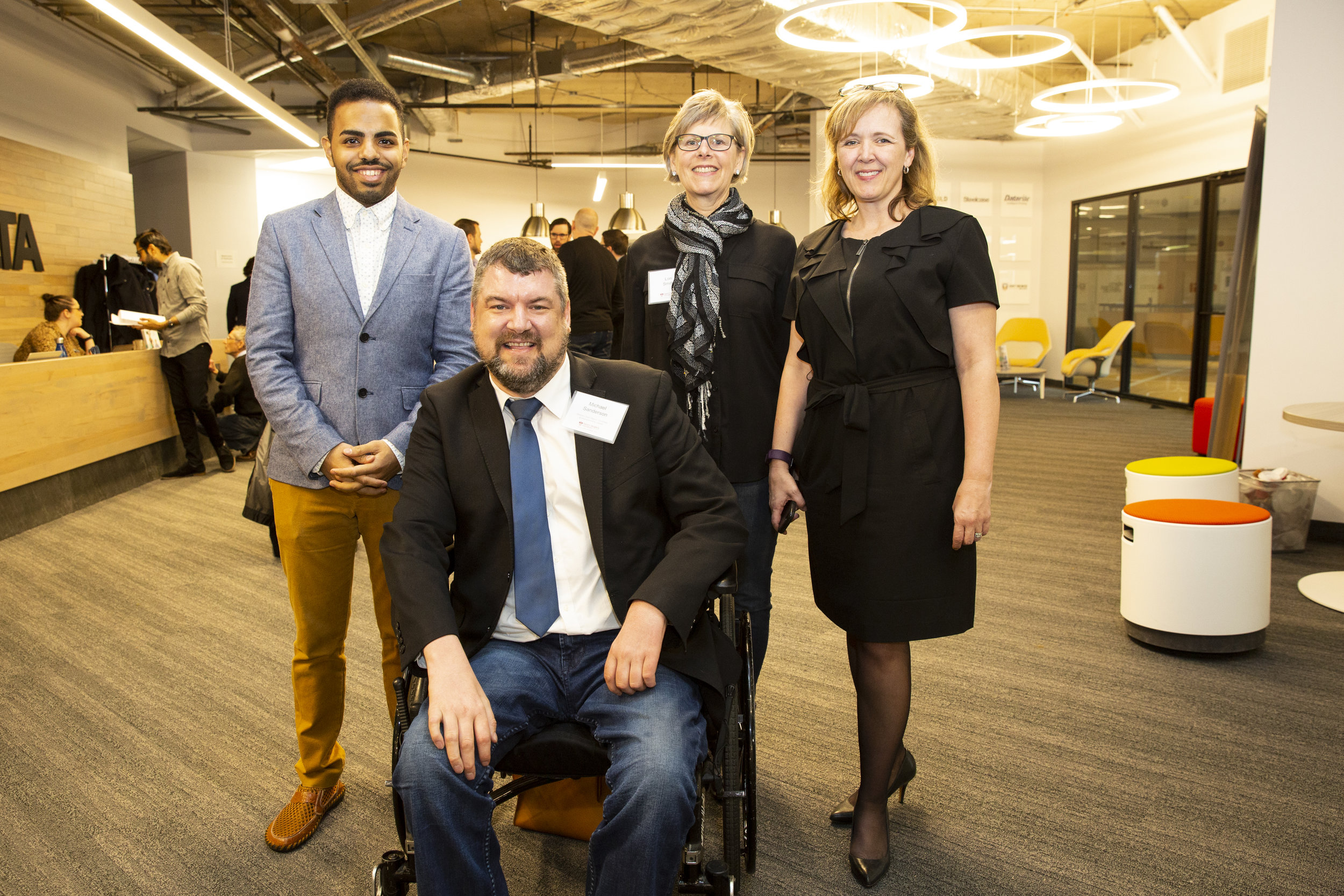
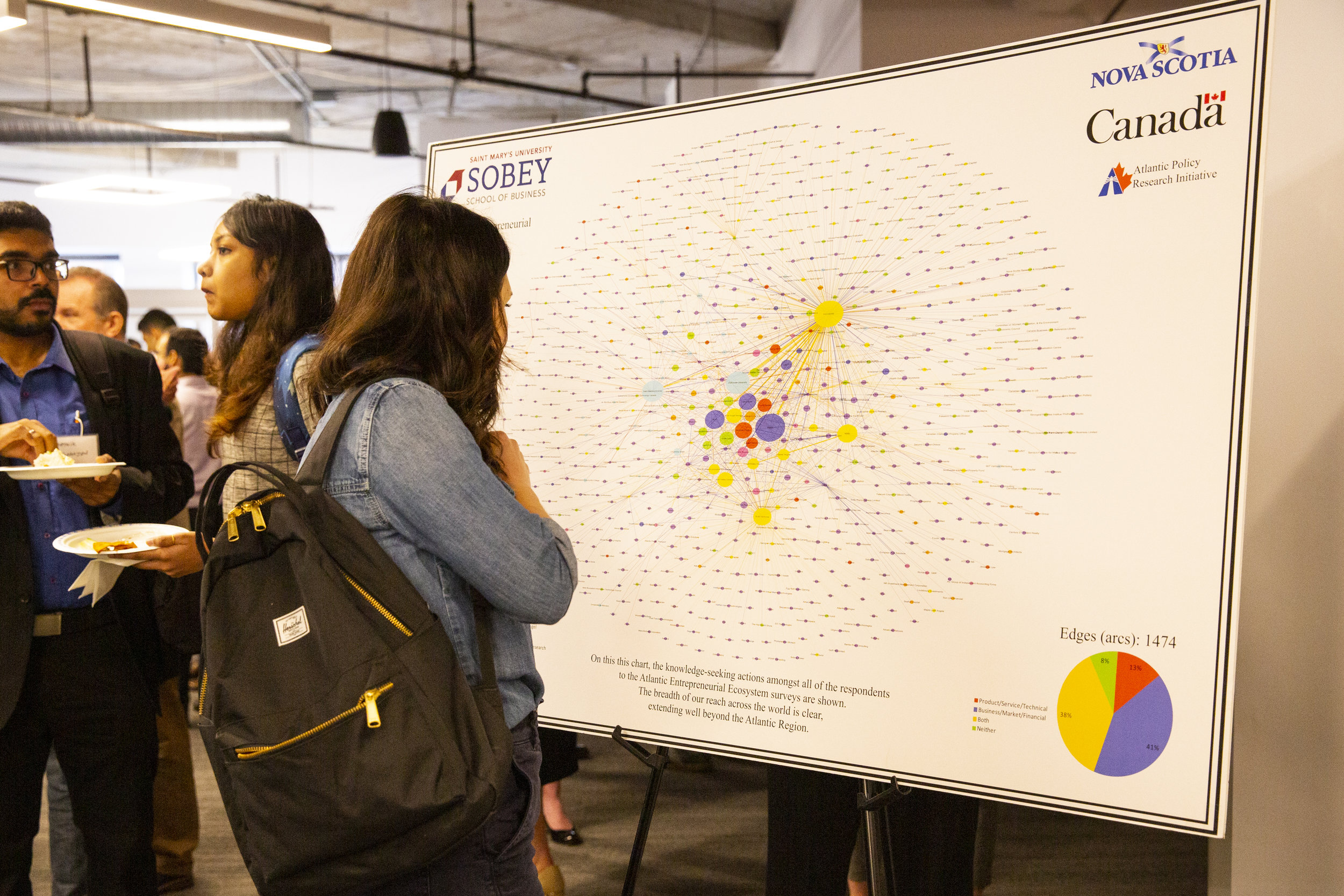

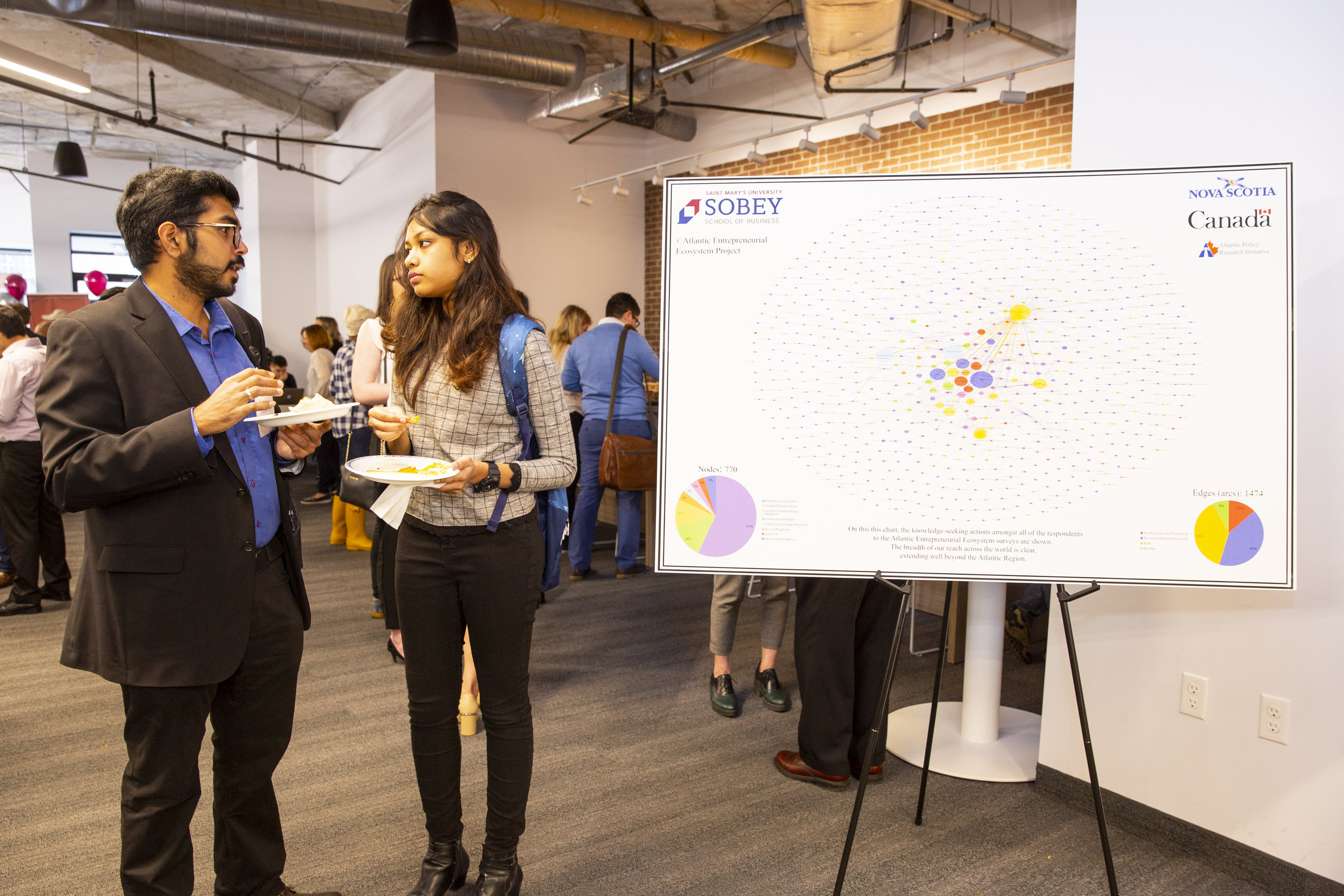
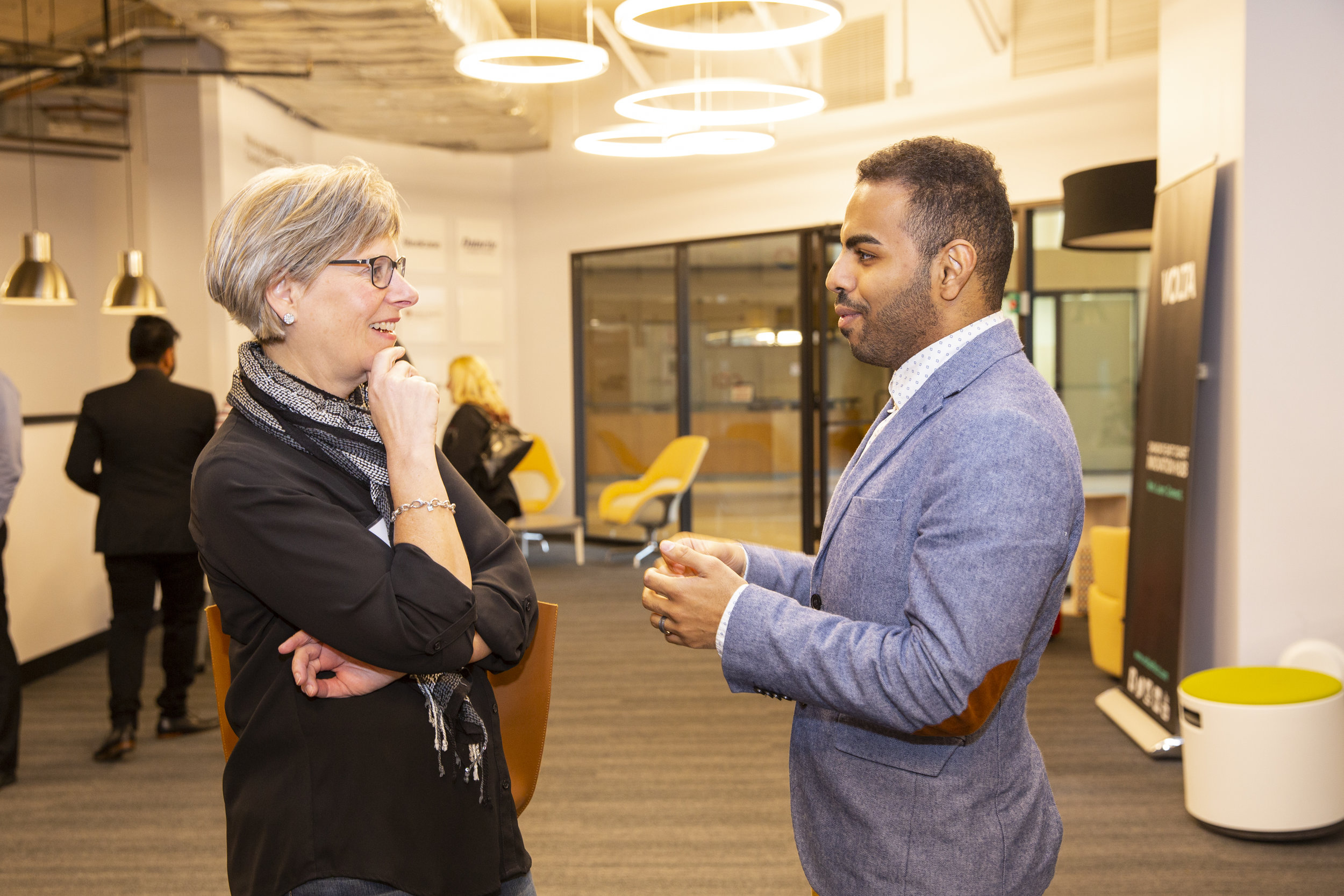
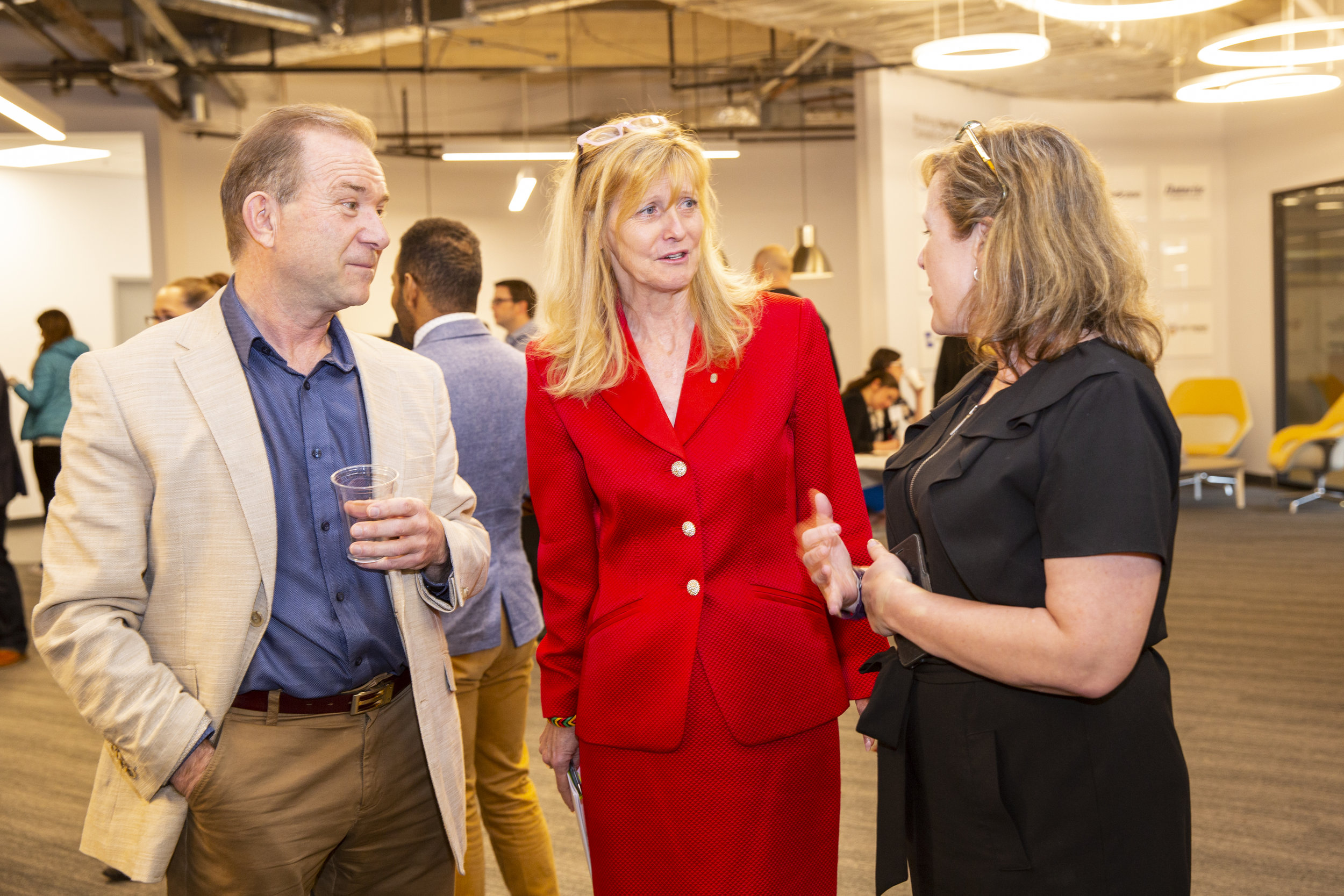
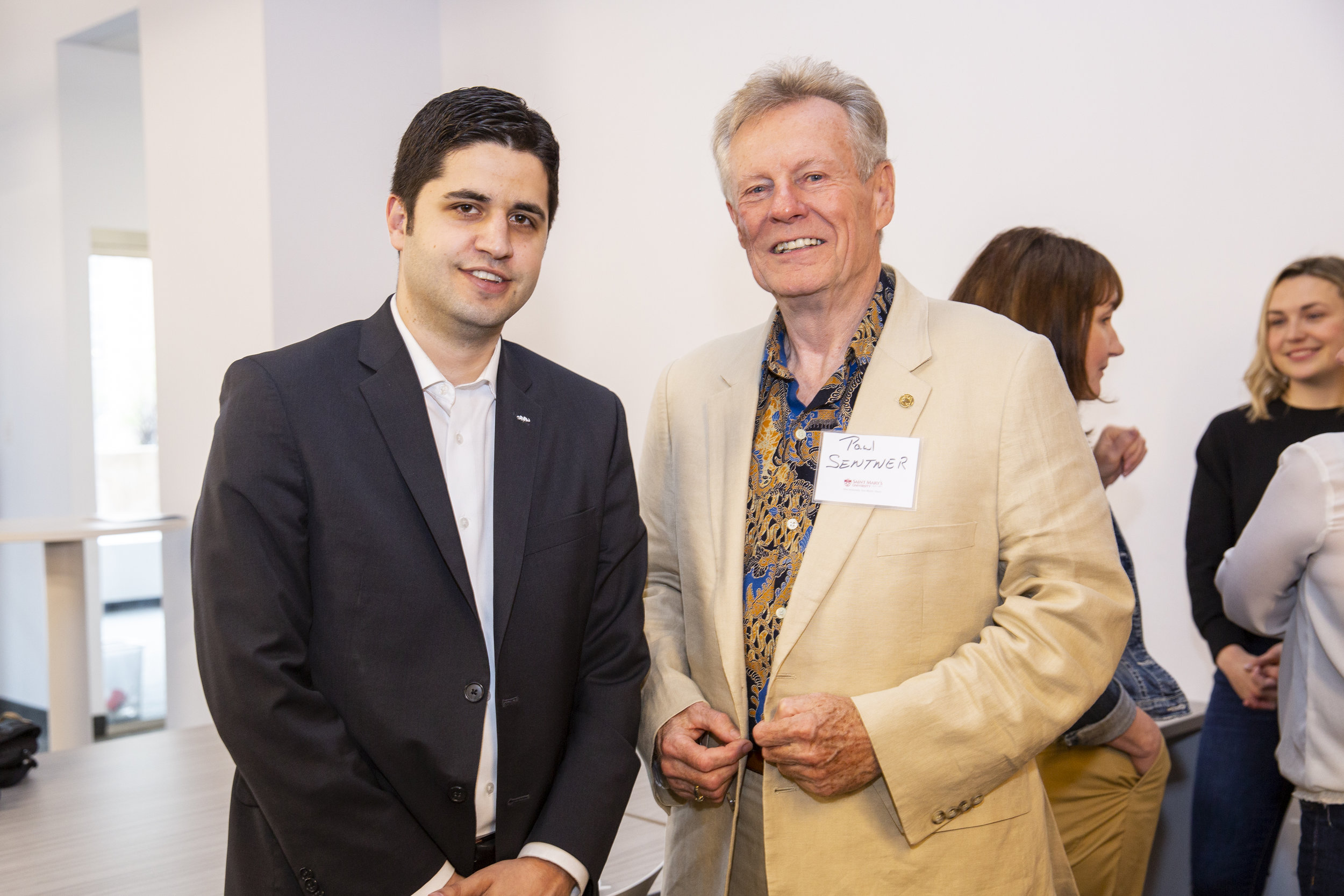
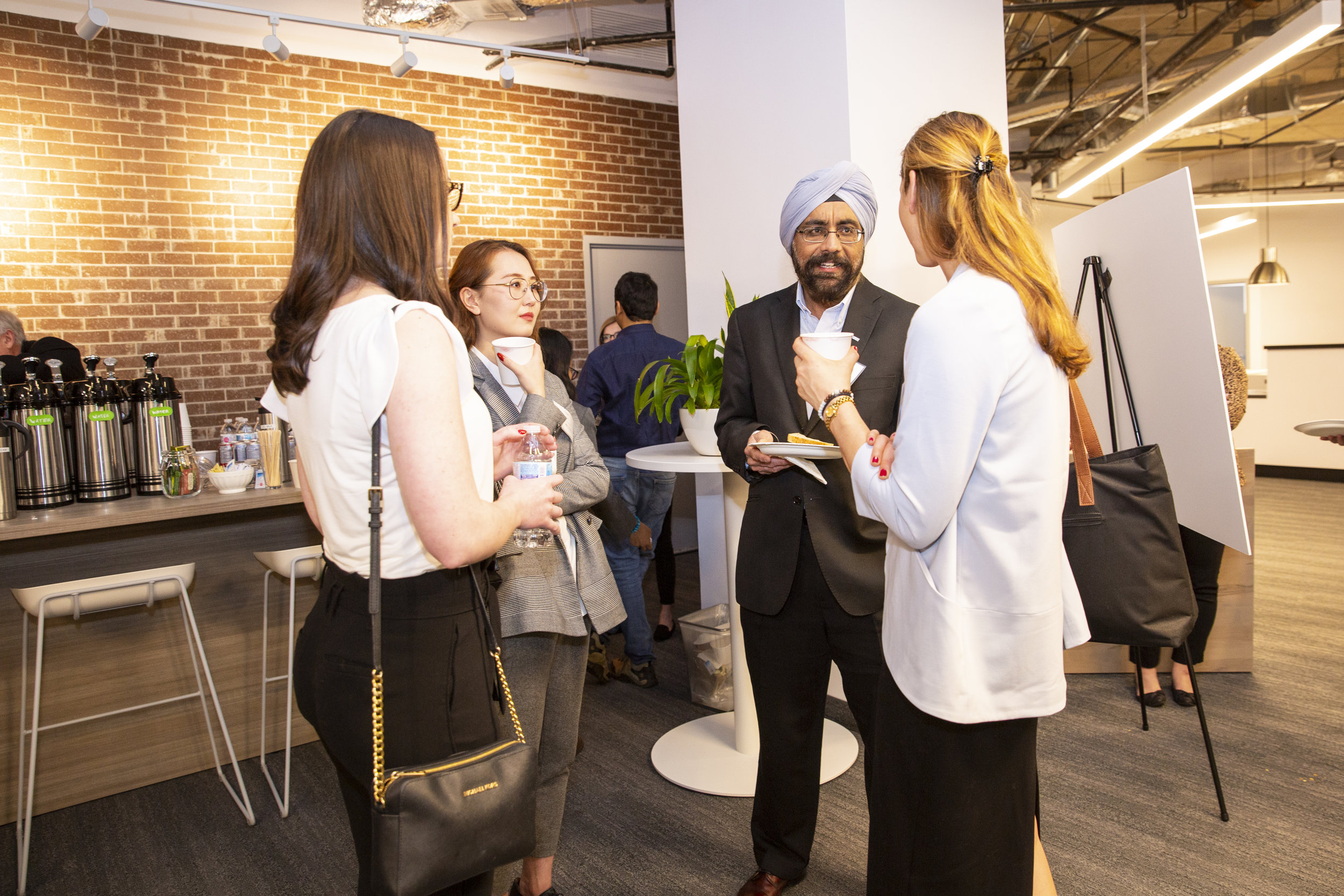
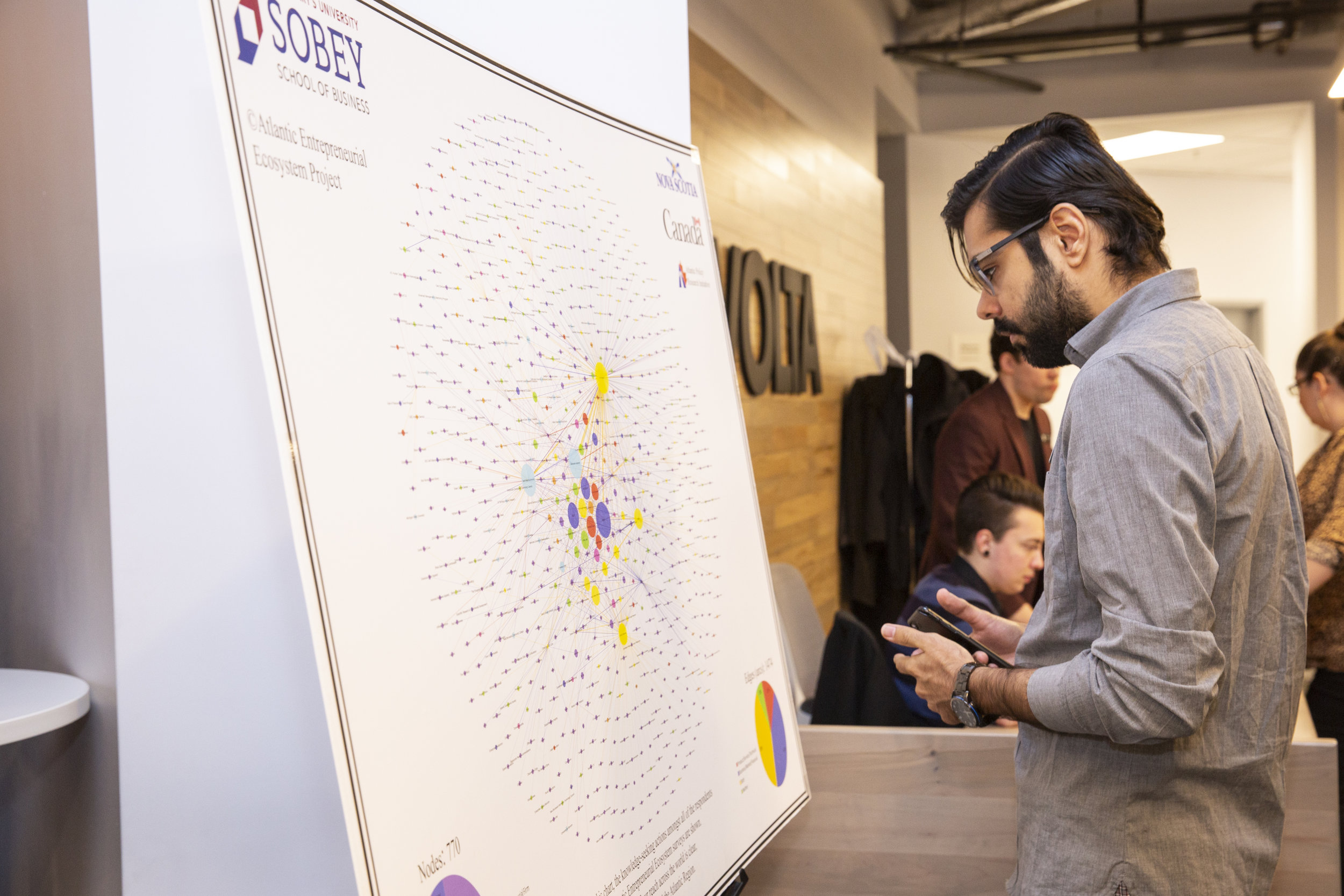
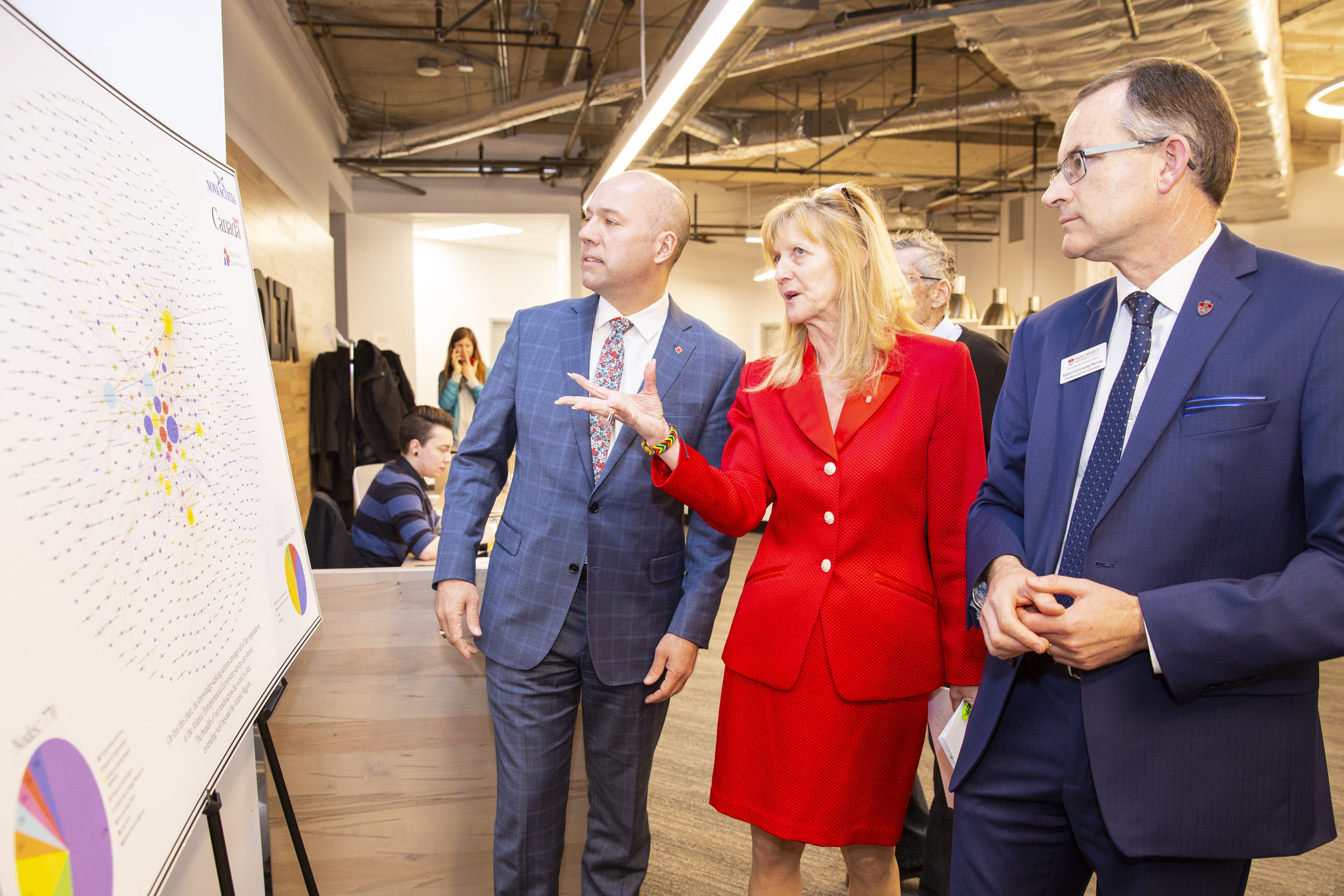

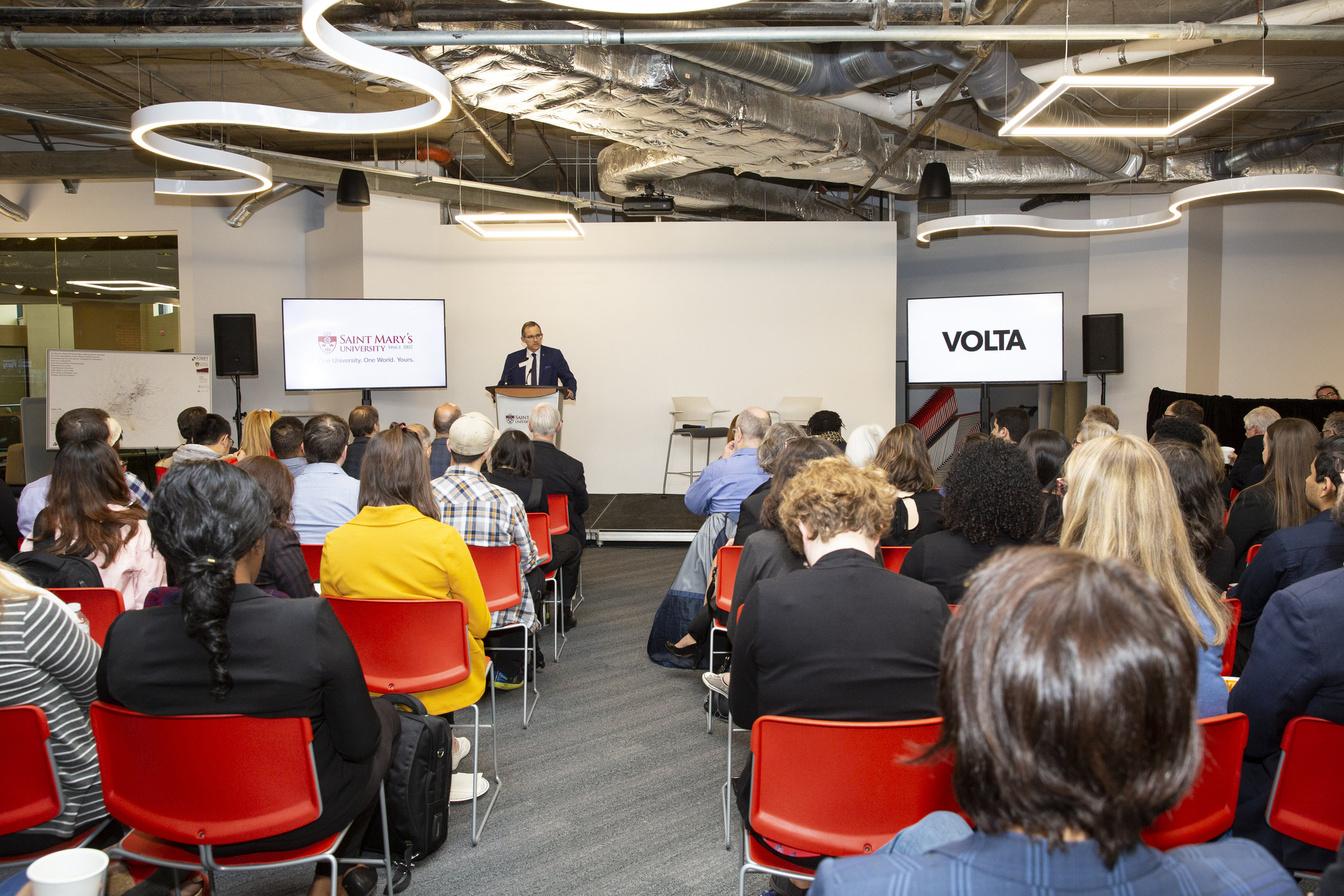
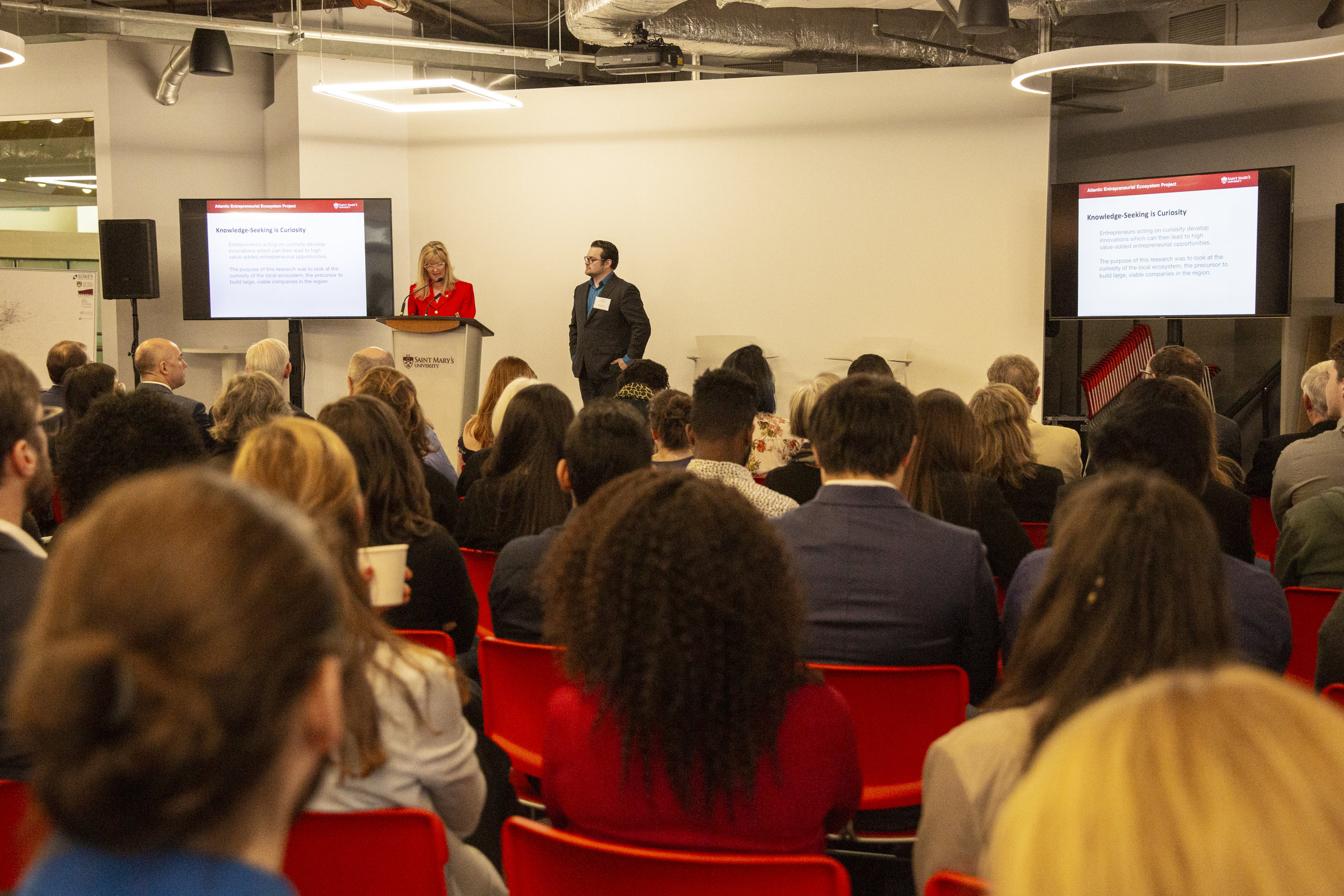
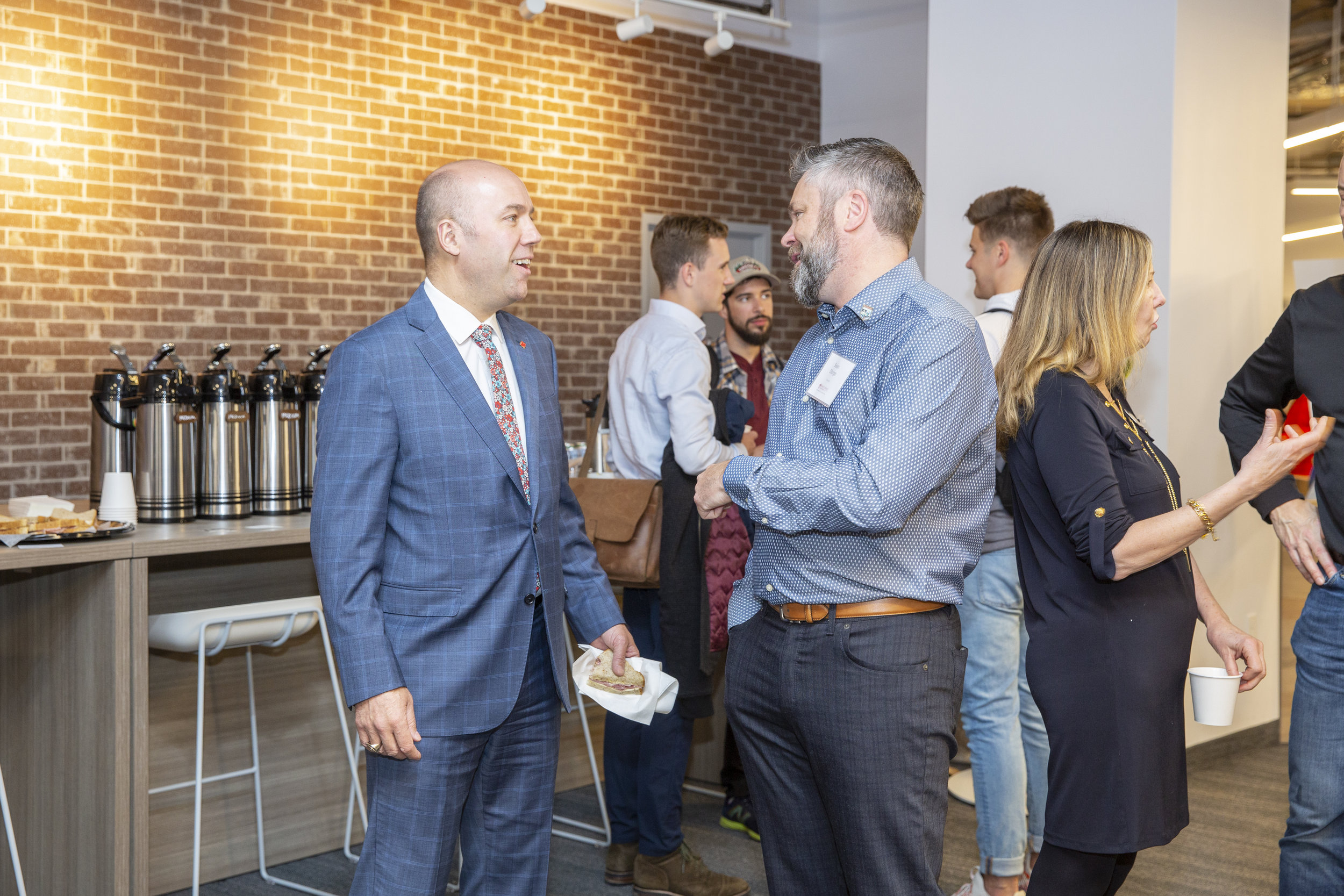
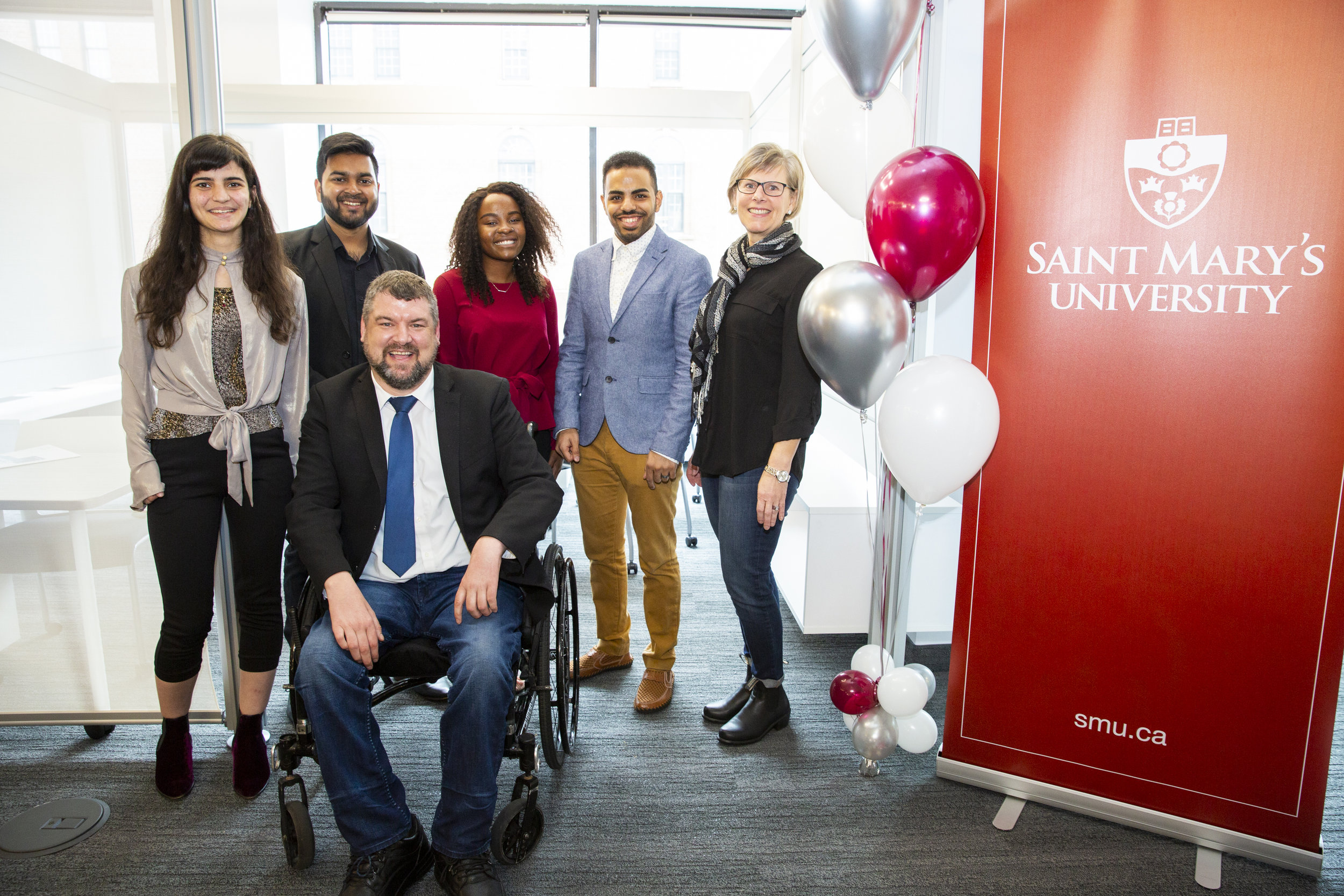
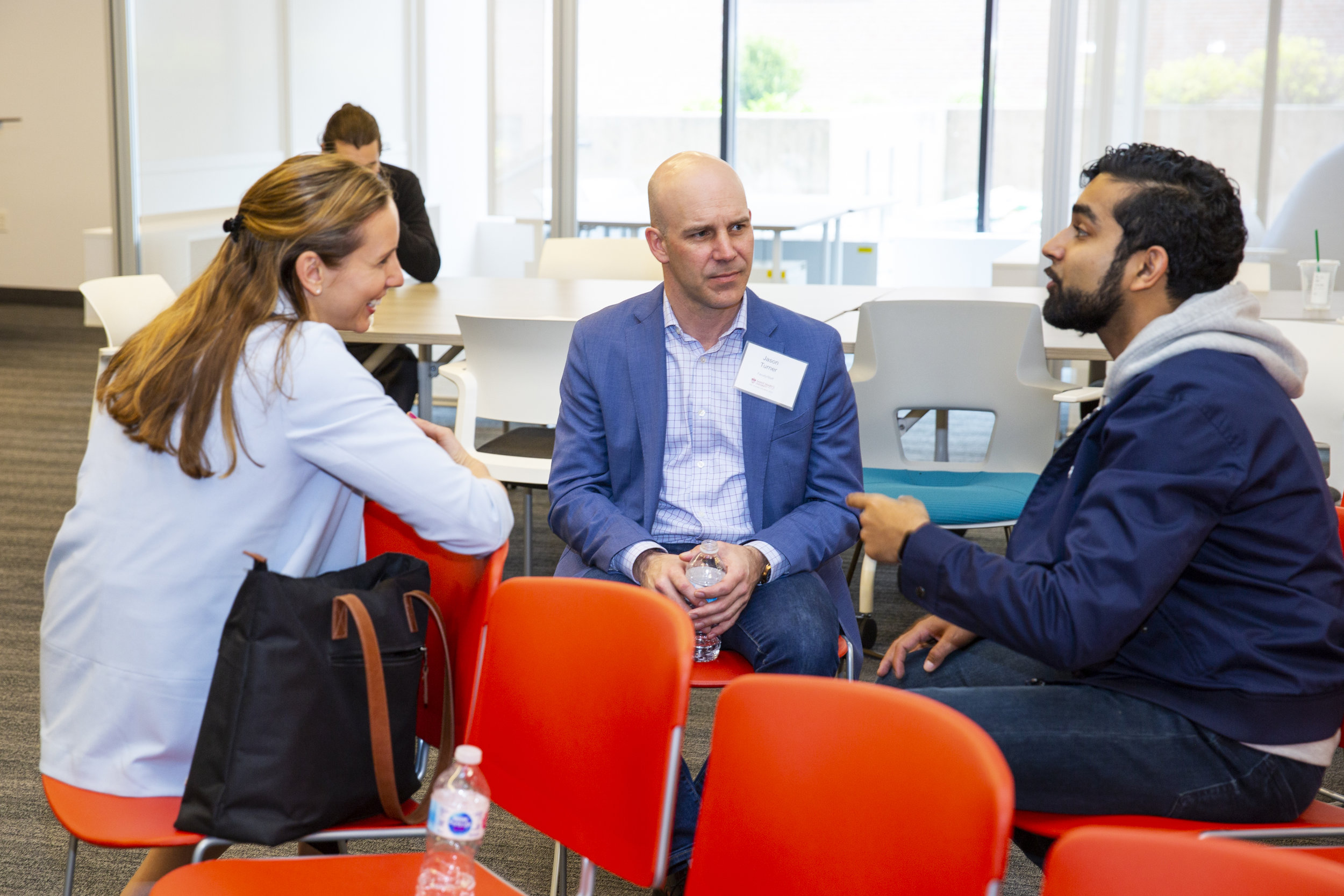
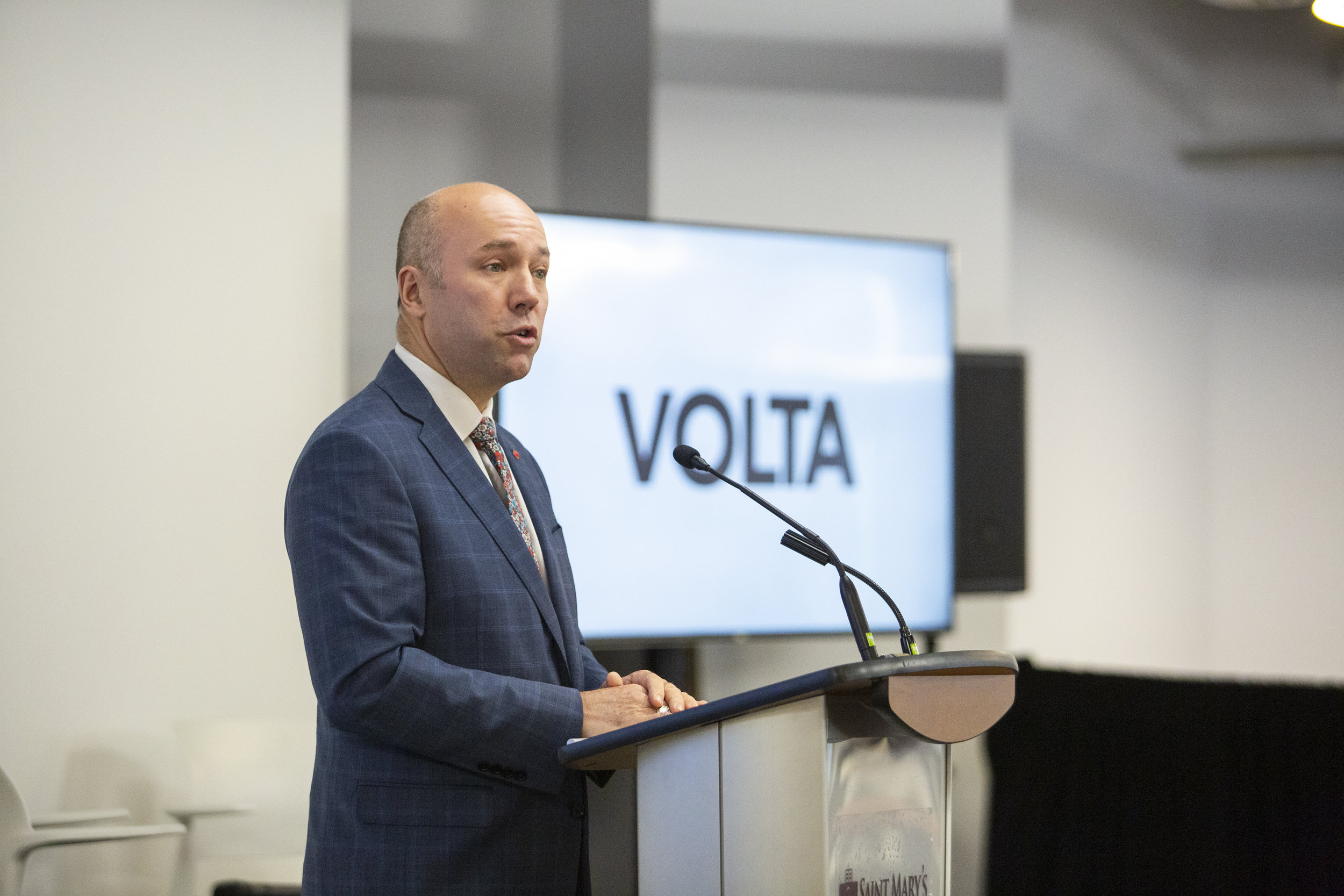
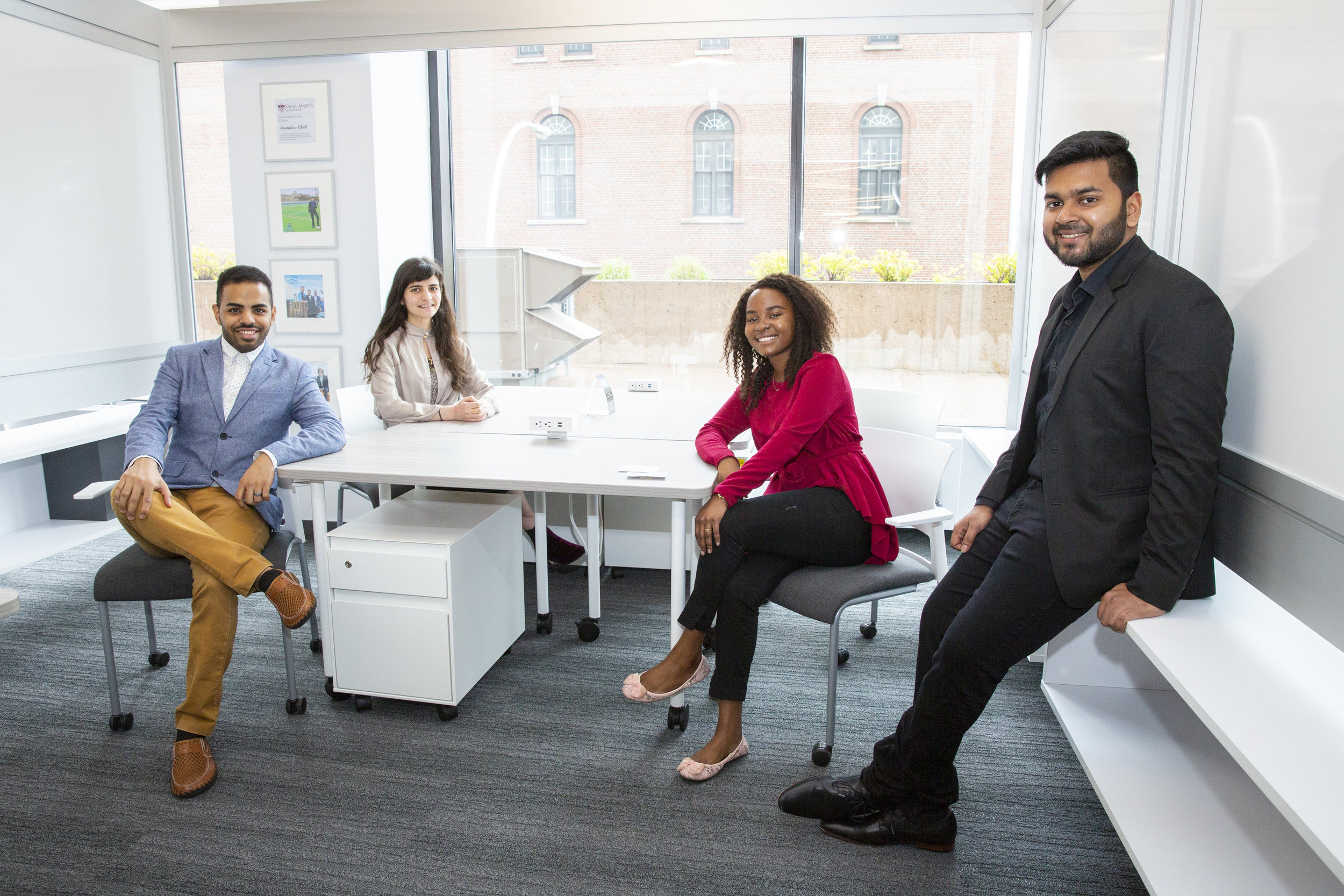
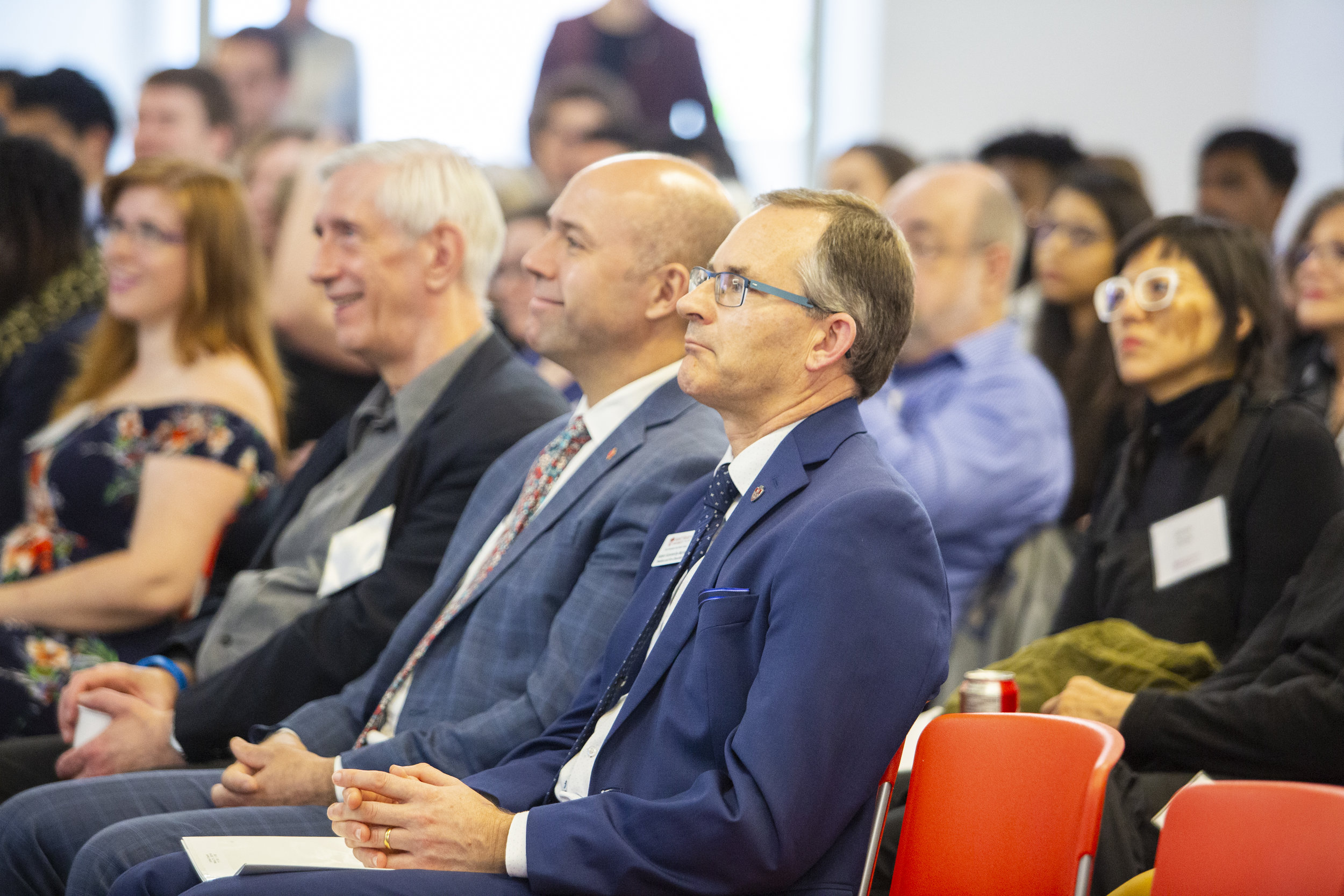
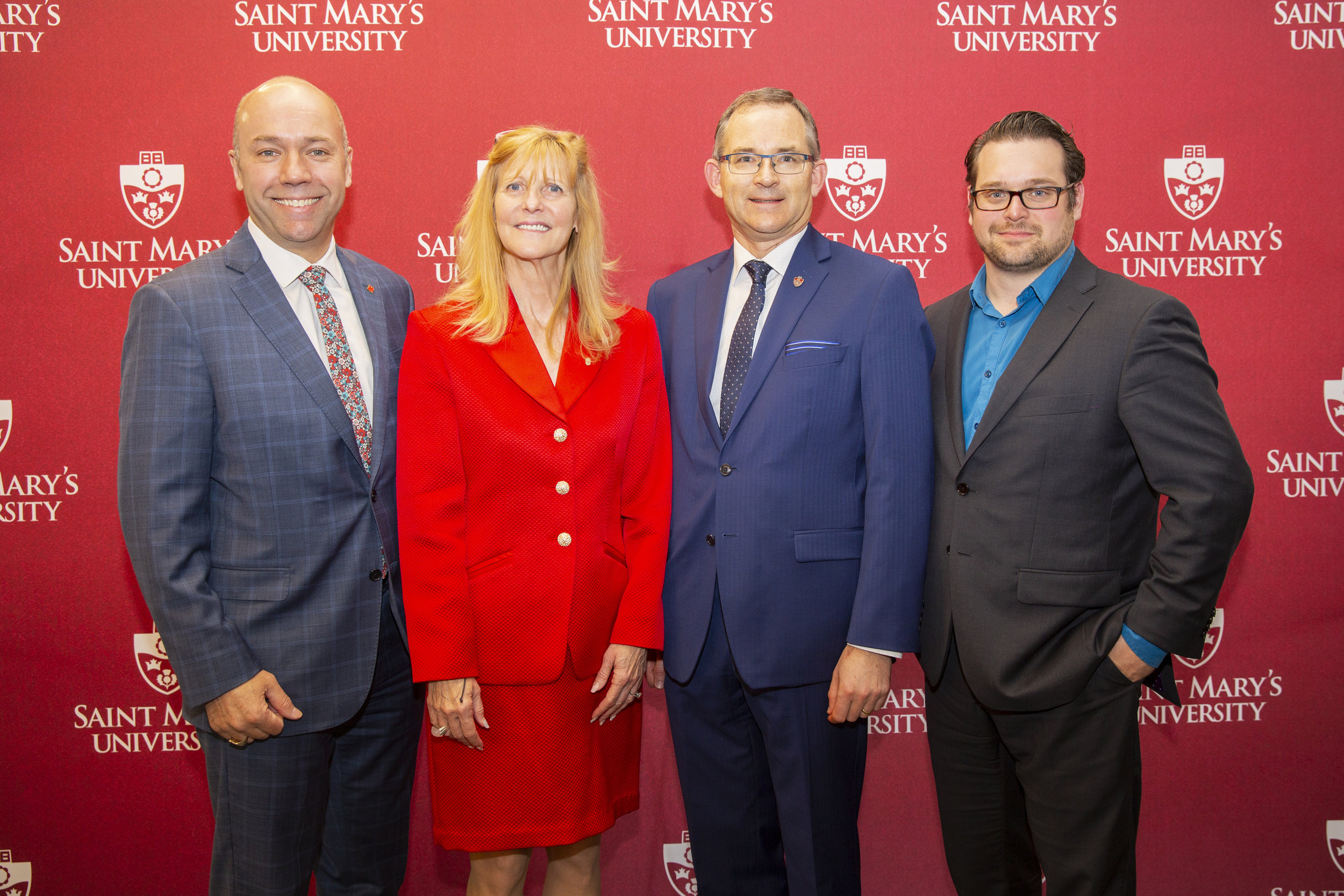


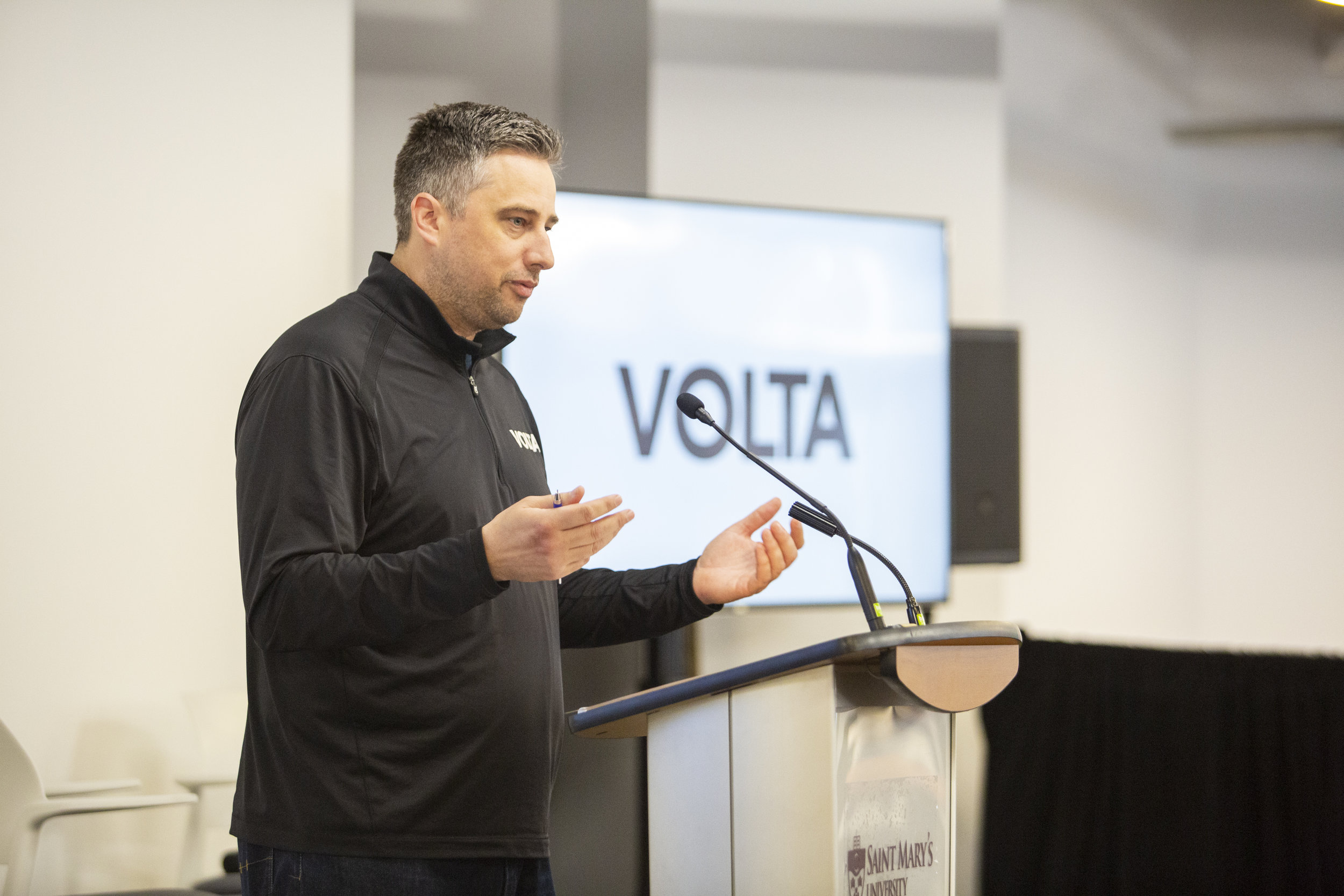
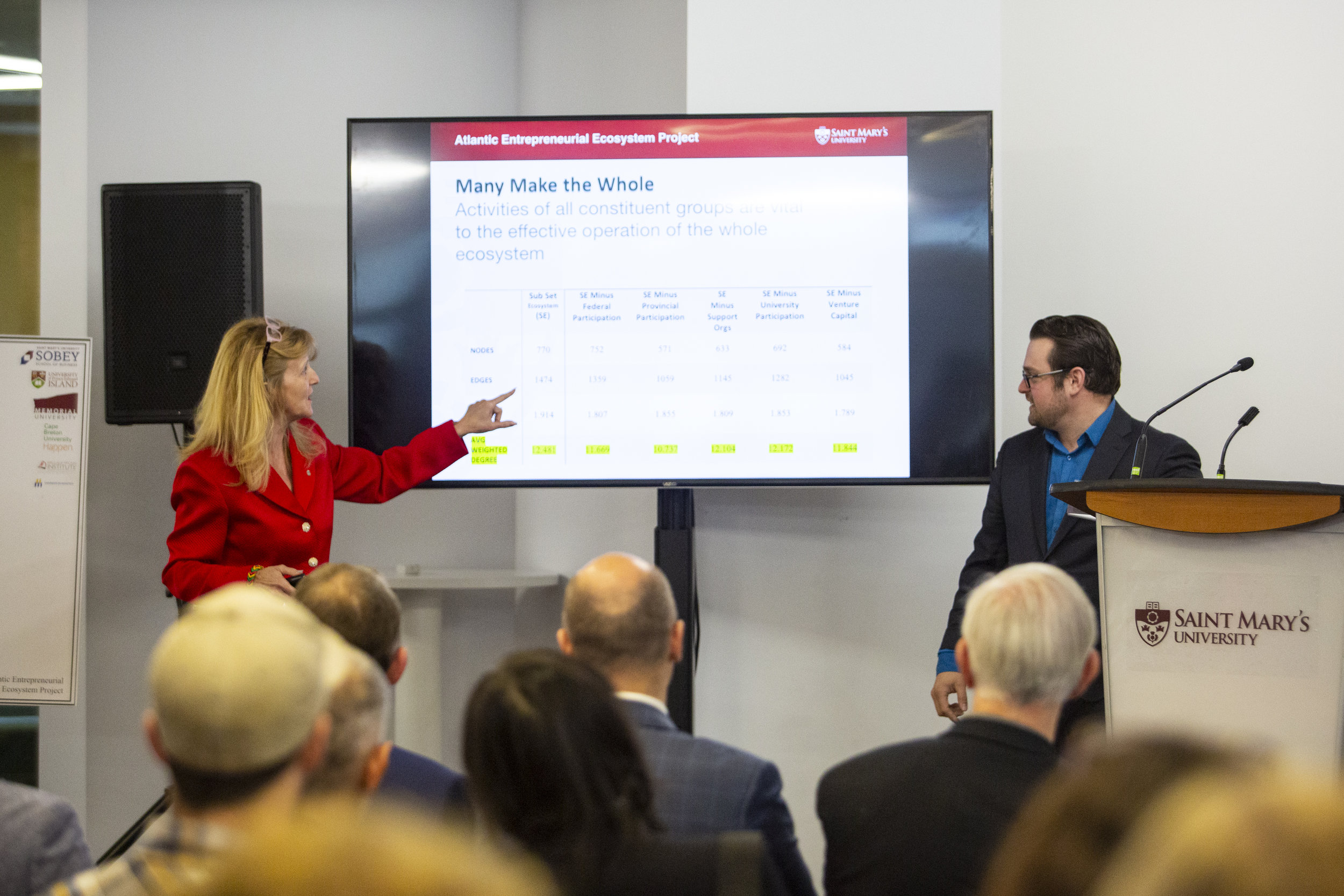
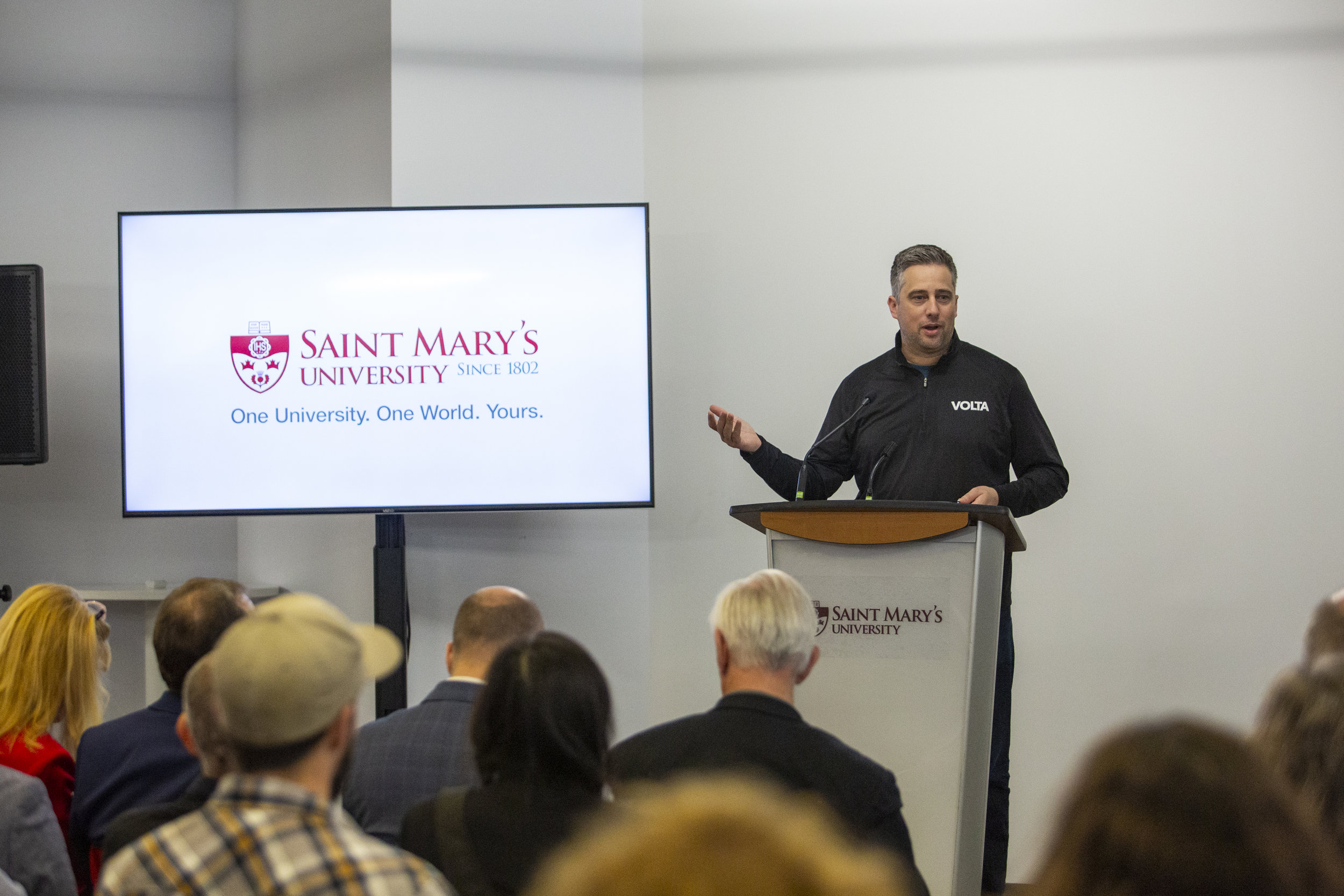

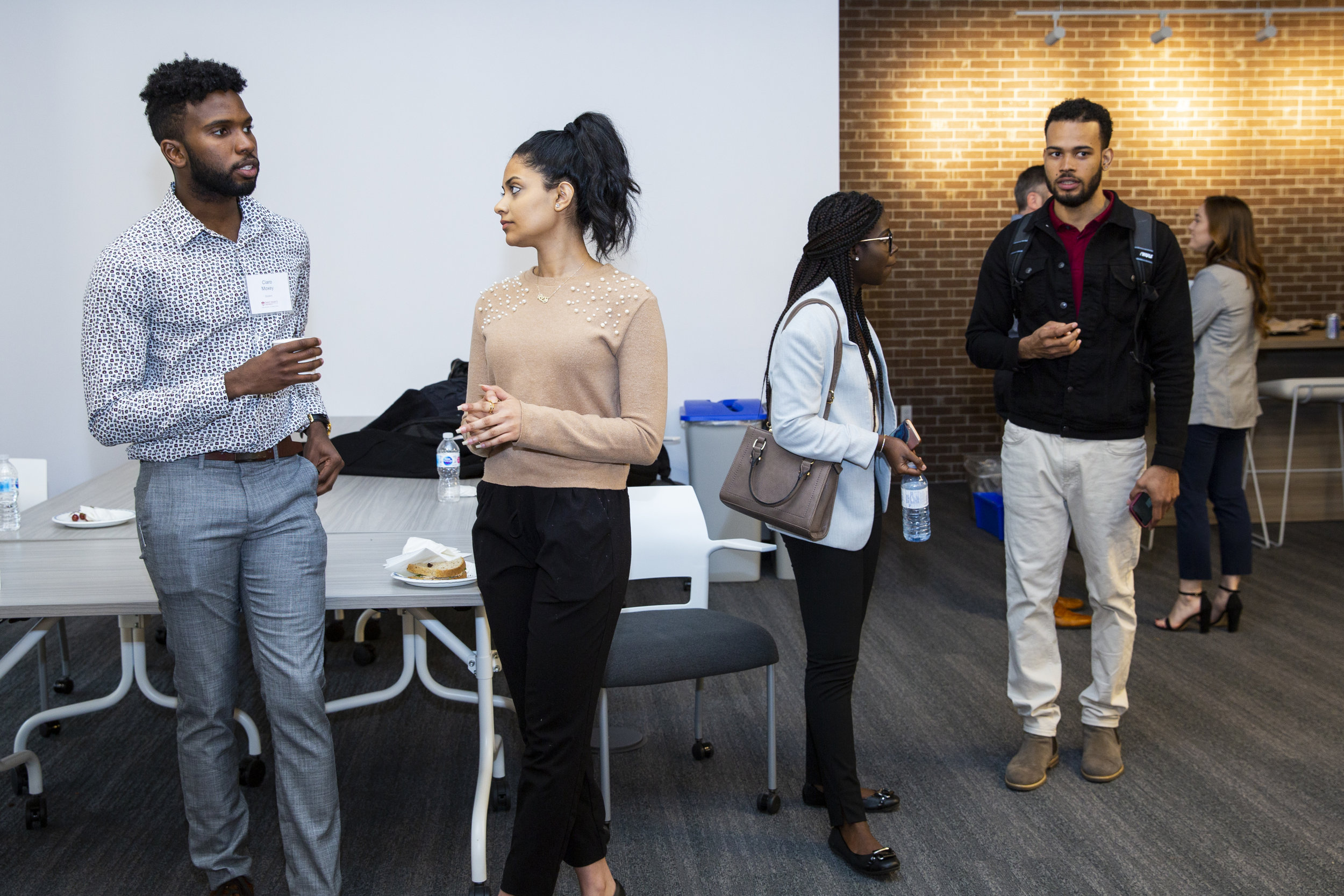
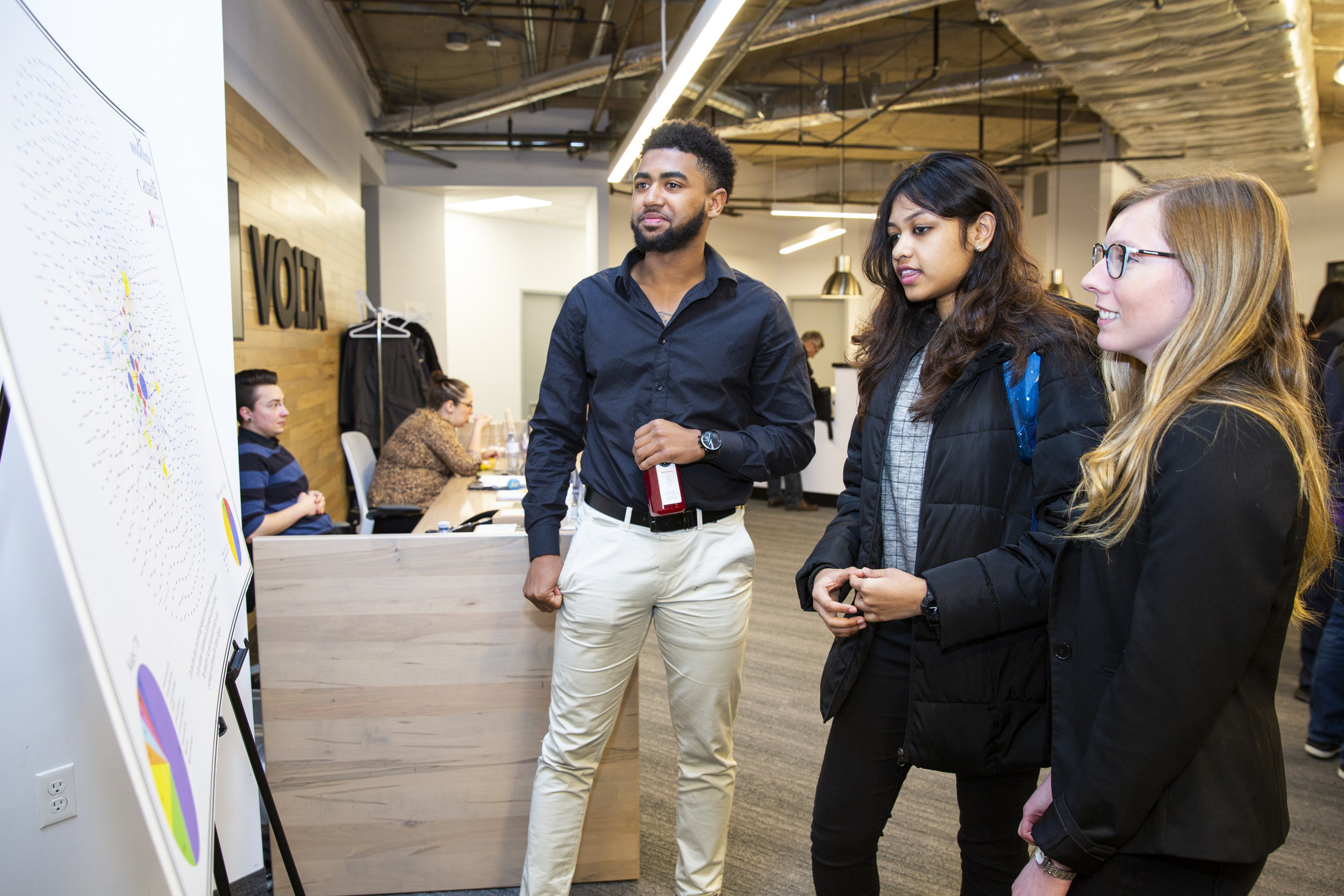
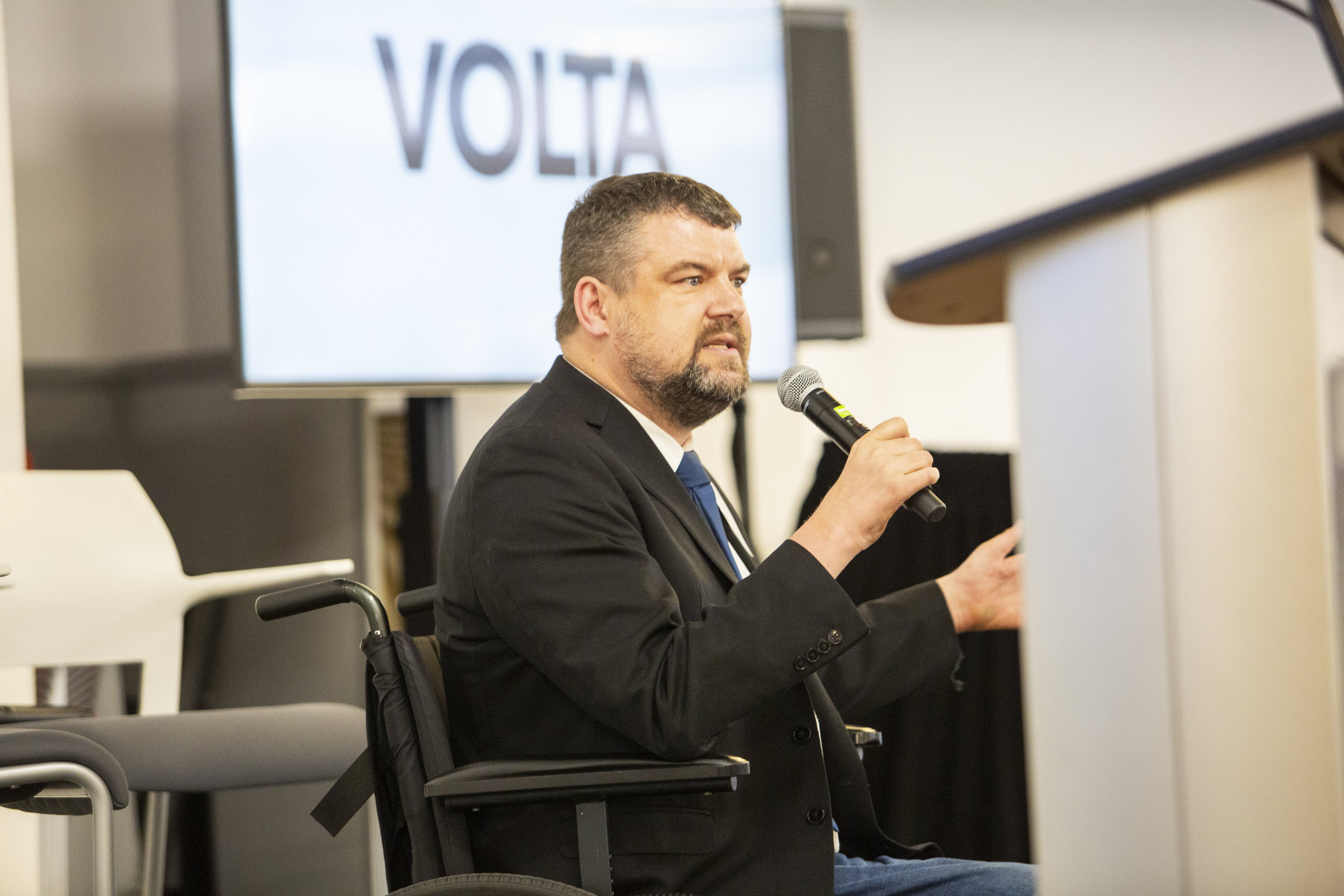




A new partnership between Saint Mary's University and Volta, an innovation hub in downtown Halifax, will see the university become the first post-secondary institution to provide its students and faculty direct access to Volta's community of innovators with a dedicated work space onsite.
Saint Mary’s will have a permanent office space at Volta, dubbed the Entrepreneurship Connector, that can house up to 6 people. The space allows SMU's community to build stronger relationships within Halifax's innovation district, while providing access to resources, help create new experiential learning opportunities, and enable Saint Mary’s faculty, researchers and programs to better reach and engage with the community and local businesses.
Volta, now in its sixth year of operation, tripled in size last year to 60,000 square feet. Spanning across three floors of the Maritime Centre, the innovation hub is creating a place for entrepreneurs and innovators to work, learn and connect with each other.
"Universities play an important role in driving innovation in Atlantic Canada, and they help attract the talent the region needs to thrive," said Jesse Rodgers, Volta's CEO. "This partnership will infuse Volta's community with the creativity, enthusiasm and innovative thinking that SMU students exemplify."
“We are passionate about helping our students, and our region succeed,” said Dr. Rob Summerby-Murray, President and Vice-Chancellor. “We know that it is by working together, with like-minded partners, that we will have the most impact and do the most good…where we will drive innovation and entrepreneurial thinking to the benefit of our province, and far beyond.”
“Saint Mary’s University is excited to have a permanent physical space at Volta,” said Michael Sanderson, Director of the Saint Mary’s University Entrepreneurship Centre. “At SMU, we believe entrepreneurship is for everyone, so this space and partnership creates a direct pathway for students, faculty and staff from across all disciplines within the university to engage in entrepreneurship and help grow and support the start-up ecosystem.”
See also:
Dr. Ellen Farrell releases research findings on Atlantic entrepreneurial ecosystem
Dr. Ellen Farrell releases research findings on Atlantic entrepreneurial ecosystem
Dr. Ellen Farrell
Global relationships key to healthy startup community says new research
A major research project from Saint Mary’s University suggests Atlantic Canadian startup businesses need to look further afield for innovation, information and funding.
A three-year, $210,000 research project exploring the startup community in Atlantic Canada has delivered its final report. The research shows that while the region’s entrepreneurial ecosystem is highly interconnected, companies can achieve greater benefit by reaching out globally for information on technology and product solutions. By relying more on “weak ties” or relationships outside of the Atlantic region or Canada, the Atlantic entrepreneurial ecosystem can improve innovation and results. The research also suggests firms explore venture capital availability outside of the Atlantic region.
“Our study looked at the “knowledge-seeking behaviours” of startups. We found that the Atlantic region is highly connected. One great opportunity lies in encouraging startups to extend their global reach for product and technology information, taking advantage of “weak ties” such as acquaintances, because this can help develop new innovations,” said Dr. Ellen Farrell. “As it is, the world is beating a path to our door to purchase our Atlantic Canadian equity,” she says, citing examples like the purchase of Atlantic businesses Radian 6 and Go Instant by Salesforce, and Quintiles IMS’s recent acquisition of STI Technologies.
The report points to more work to be done by mature firms to support growing businesses. A call to action in the report offers a long list of suggestions for ways these firms can support startups, including testing prototypes, lending talent or equipment, and providing an entry introduction into an industry network of contacts.
“Saint Mary’s University is dedicated to fostering both the foundational and community-engaged research efforts of our professors. This project of Dr. Farrell and her team is an excellent example of research that supports our community and directly impacts the health of our region’s economy,” says Saint Mary’s University Associate Vice-President Research, Dr. Adam Sarty.
“This applied research has already helped inform start-up founders, policy makers and other members of the ecosystem it describes. Dr. Farrell’s work complements her teaching in entrepreneurship, and is key in building a culture of innovation with an entrepreneurial approach to both business development and general problem solving.”
A team led by Dr. Ellen Farrell, a management professor at the Sobey School of Business at Saint Mary’s University, conducted the research, which was based on a study Dr. Farrell undertook in 2014. The team was comprised of eleven researchers plus graduate and undergraduate students from six universities across the region. Federal funding to support the project came from ACOA’s Atlantic Policy Research Initiative.
Research into the effects of low interest rates on Canadian loan markets receives grant
Dr. Mohammad Rahaman, Canada Research Chair in International Finance & Competitiveness and a professor with the Sobey School of Business
The work of a Saint Mary’s University researcher into the effects of low interest rates on the syndicated loan market in North American has received a boost.
Mohammad Rahaman, Canada Research Chair in International Finance & Competitiveness and a professor with the Sobey School of Business, is receiving a $40,000 research grant from the Canadian Securities Institute Research Foundation.
Rahaman’s research focuses primarily on understanding how access to intermediated capital such as bank loans can be a source of power and efficiency for industrial firms in a competitive global market place. He is currently investigating the effects of the unprecedented and prolonged low interest rates by central banks following the global financial crisis.
His research also touches on how financing through syndicated loans influences investment, innovation, and internationalization among North American industrial firms. A syndicated loan is a loan provided by a group of lenders and set up and administered by one or more commercial or investment banks.
“This is one of the most coveted research grant awarded by industry practitioners in Finance in Canada, and I am honoured to be its recipient,” said Rahaman. “No other finance faculty member in the Maritimes has received this grant, which speaks to a recognition of the importance that the Sobey School of Business has in our region and the quality of research underway at the school.”
The Canadian Securities Institute Research Foundation encourages and supports grounded research on the Canadian Capital Markets.
“The Canadian Securities Research Foundation is actively supporting research into interest rate risk, especially the drivers and impact of the current low interest rate environment,” said Heather-Anne Irwin, Executive Director of the Foundation. “We are thrilled to be supporting Professor Rahaman in his work, as we strive to bridge the gap between theory and practice.”
Saint Mary’s expands cross-border education ties with China

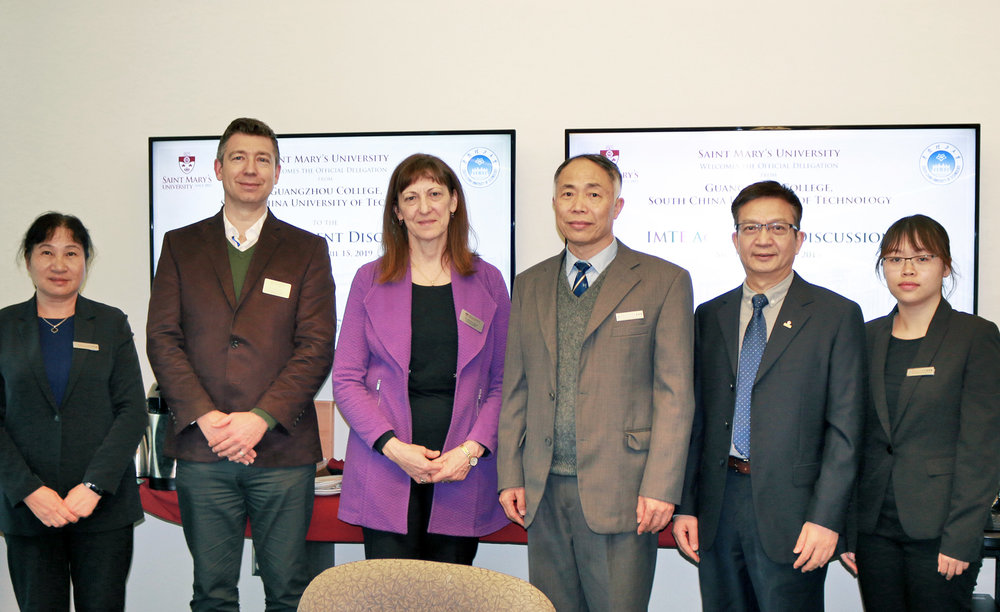
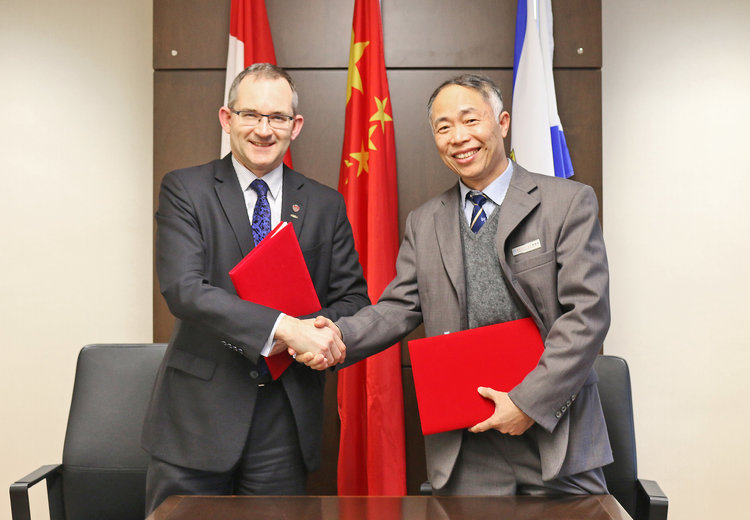
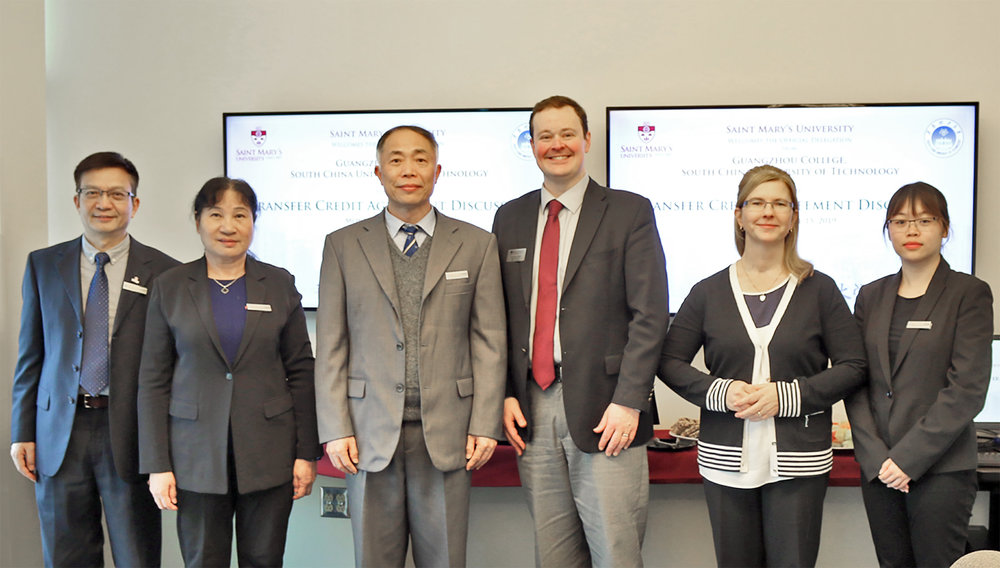

Students in business programs at Guangzhou College, South China University of Technology (GCU) will have added opportunities to transfer to Saint Mary’s after two years and complete their degree at the Sobey School of Business.
A senior delegation from GCU was on campus this week to sign an enhanced Transfer Credit Agreement, paving the way for closer ties with one of China’s most renowned independent colleges. Executive Vice-President Zhixin Zeng, Vice-President Ying Lin, Dean of the International Business School and Director of the International Office Liguang Wu and International Office Program Coordinator Huijing Huang held a series of meetings with their counterparts at Saint Mary’s on Monday, April 15.
Mr. Zeng suggested that GCU’s visit to campus reflected the growing ties between the two universities, while Mr. Lin commented that the new Transfer Credit Agreement opened the door to exciting new possibilities for international cooperation between the two institutions.
Celebrating a Longstanding Partnership
In the years since the signing of an initial MOU in 2011, designed to foster academic and educational cooperation between Guangzhou College and Saint Mary’s, around 60 students have come to campus – some to complete their third and fourth years of their degree as part of the 2+2 agreement with the Sobey School of Business, others to take the Master of Finance Program. Many of the 25 students currently enrolled at Saint Mary’s enjoyed a dinner on Sunday hosted by their alma mater in China to celebrate the arrival of the delegation to Halifax.
Meeting with the delegation on Monday, Dr Summerby-Murray, President and Vice-Chancellor of Saint Mary’s, said that the University was committed to building on the strong foundation of academic partnership between the two universities. This week’s visit, he said, was also an important affirmation of people-to-people connections between Canada and China. As “Canada’s International University”, Saint Mary’s is proud to be recognized as a national leader in building bridges between the two countries, he said.
Guangzhou College of South China University of Technology is a large primarily undergraduate institution with more than 21,000 full-time students who can choose from 35 programs offered through 14 schools. Its 283-acre campus is located just outside Guangzhou city in China’s Pearl River Delta, home to more than 120 million people a major centre of technology and innovation.
Mineral Resources Development Fund expansion announced at Saint Mary’s University
Dr. Jacob Hanley and Kevin Neyedley chat with Sean Kirby, left, executive director of the Mining Association of Nova Scotia, and Energy and Mines Minister Derek Mombourquette. (Photo: Kelly Clark/CNS)
Businesses, prospectors and researchers now have more support for innovative projects in the mining sector as the result of a provincial government announcement at Saint Mary’s University.
As part of Budget 2019-20, the province is increasing the Mineral Resources Development Fund by $800,000 to a total of $1.5 million. Energy and Mines Minister Derek Mombourquette opened the fund to applications in an event at Saint Mary’s on April 9.
“Mining is a globally competitive sector that creates career opportunities for our young people, while generating revenue for programs and services that benefit all Nova Scotians,” said Minister Mombourquette. “These investments make connections and develop new ideas that help our companies stay at the forefront of technology and environmental protection.”
Saint Mary’s University Professor Dr. Jacob Hanley and PhD student Kevin Neyedley received $47,500 from the fund in 2018. They are working on research and gathering geological information about how strategic minerals formed. This will help identify where deposits may be located and then extracted with minimal environmental impact.
“It is vitally important for Nova Scotians to have access to the most current scientific knowledge, gathered using cutting edge research tools,” said Dr. Hanley.
“Our research can help attract companies by reducing exploration costs for industry and reduce the impact that grass-roots exploration has on the environment through narrowing the size of mineral deposit targets,” said Mr. Neyedley.
Last year, the province supported 28 projects including mineral exploration programs, professional development, innovation, university research and training opportunities for young people.
Saint Mary's research projects with big industry impact
The Office of Innovation and Community Engagement at Saint Mary’s is a small office that delivers a big impact.
A recently-released progress report highlights a few projects that Saint Mary’s faculty members have been working on in collaboration with industry partners, including:
Dr. Jason Rhinelander’s partnership with LED Roadway Lighting has allowed him to lend his expertise in artificial intelligence and object recognition to evaluate the accuracy of an adaptive radar-based sensor platform for pedestrian and vehicle recognition at streetlight intersections.
RetailDeep uses innovative facial recognition software to enhance the shopping experience in stores, collect data from clients, and pinpoint opportunities to innovate within the retail space.
A partnership between Coloursmith Labs and Saint Mary’s researcher Dr. Danielle Tokarz has led to a breakthrough in treatment for colour blindness. Along with her team, Dr. Tokarz helped the startup company refine the focus of their research efforts and identify the appropriate nanoparticles and gels for the lenses.
“Our office also takes pride in pairing faculty members with industry, helping to facilitate solutions to local companies’ problems using academic expertise, said Kevin Buchan, Director of the Office of Innovation and Community Engagement. “It’s also a great opportunity for students, the next generation of researchers, to work on applied projects in their fields.”
“We’re encouraged by the success we’ve had so far, and we look forward to doing more of these innovative projects,” said Buchan.
Click here to read the progress report, featuring researchers from all faculties at Saint Mary’s, and their partners, click here.
ABOUT OICE:
The Office of Innovation and Community Engagement (OICE) facilitates research relationships between Saint Mary’s University and companies, government departments, and community organizations. OICE is the initial point of contact for faculty members and external partners wishing to collaborate. The office assists with finding suitable expertise, contract development, and advises on funding opportunities.
Dr. Danielle Tokarz's research receives boost from the federal government
The research of Saint Mary’s new chemistry faculty member, Dr. Danielle Tokarz, into the microscopic structure of large molecules in living animals and plants received a big boost, as a result of an investment of $153,026 from the federal government.
Dr. Danielle Tokarz
The research of Dr. Tokarz focuses on the structure of large molecules inside animals and plants which are relevant to the wellbeing of Canadians including collagen in humans and other animals, as well as cellulose and photosynthetic membranes in plants. The funding will allow Dr. Tokarz and her interdisciplinary team of chemists, physicists and biologists to build a new type of laser microscope, one that can measure the structure of microscopic regions of plant and animal tissues at record high speeds. The technology will allow the first live measurements of tiny structural changes in living creatures, allowing a fresh look at functioning biological phenomena. The research will address questions in biology such as, how does collagen degrade in organ tissues during ageing, and how woody cellulose, the leftover plant material after tree removal, can be efficiently degraded for conversion into biofuels.
In addition to the short term benefits of this research in increased knowledge of fundamental biological processes, long term benefits for Canadians are expected in healthcare and industry. Studies of collagen in the extracellular matrix during ageing will offer advances to the healthcare of Canadians. Studies of cellulose structure will have an impact on local industries including biofuels, pulp and paper, and biodegradable materials. Finally, studies of photosynthetic tissues will have applications in increasing plant growth efficiency, growing plants in colder climates and increasing global food supply. The proposed nonlinear laser microscope will be the first in Atlantic Canada, giving students and faculty the opportunity to use cutting-edge technology.










